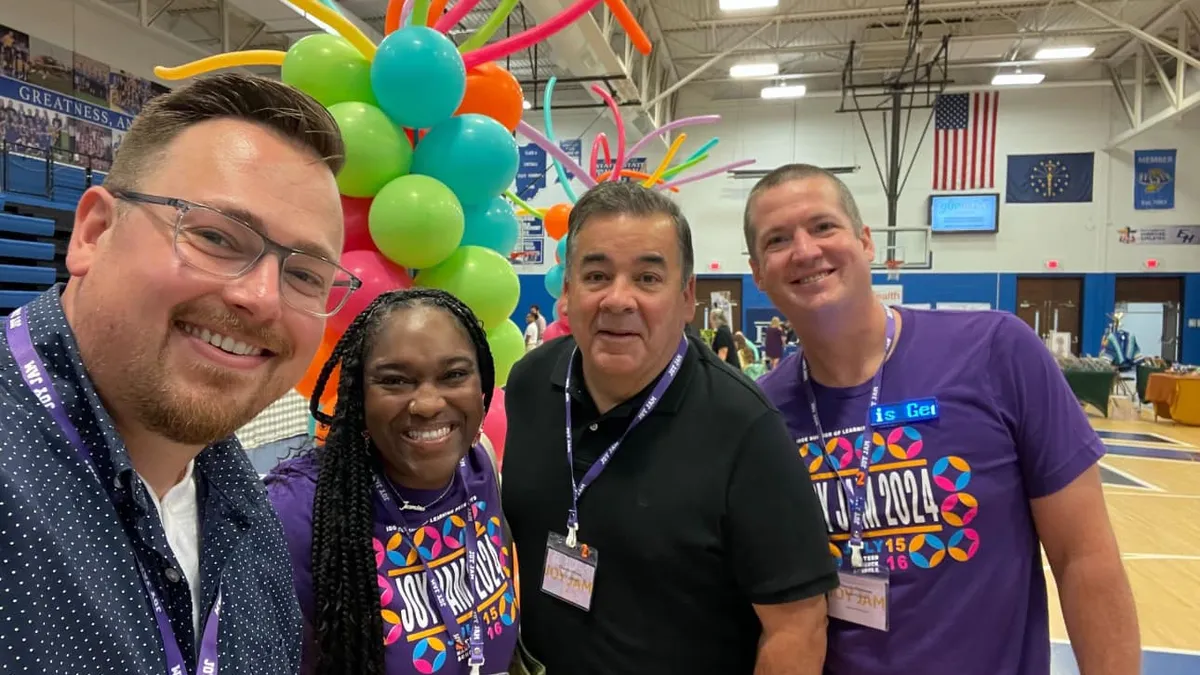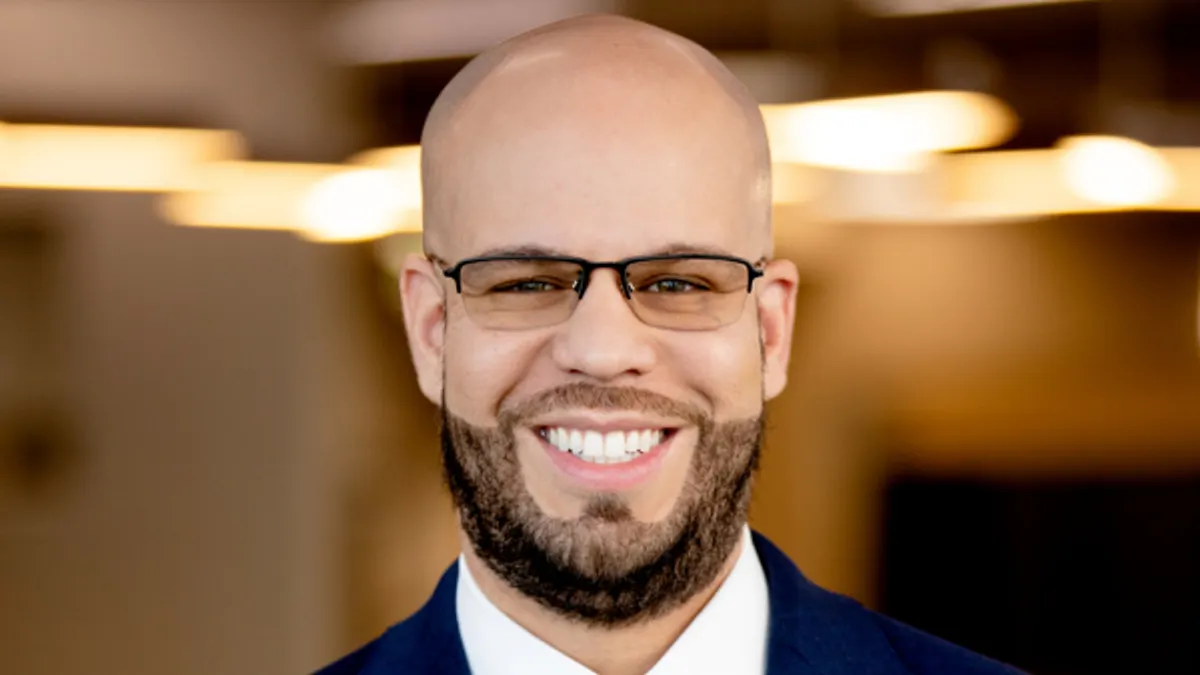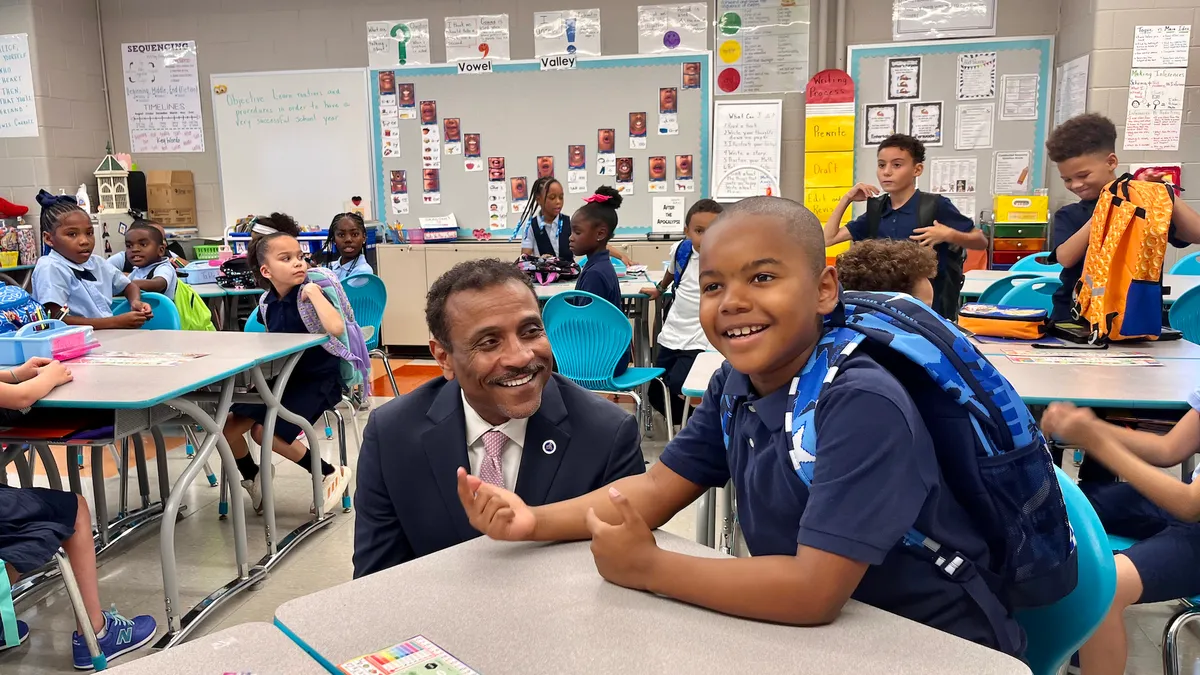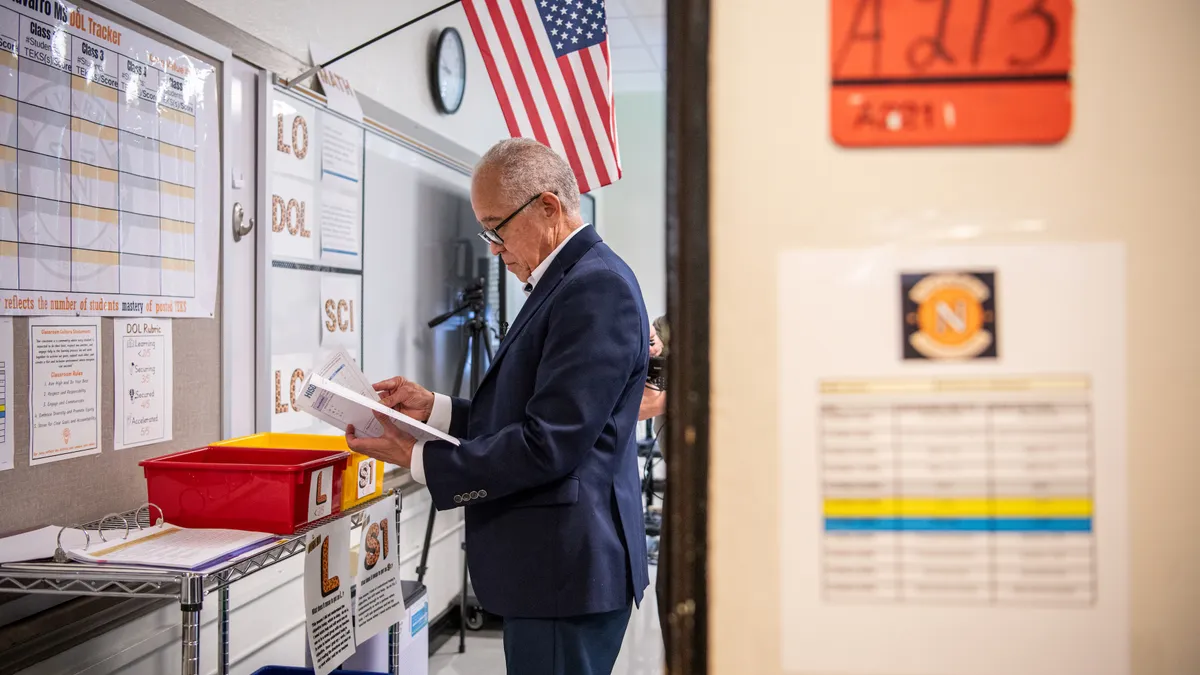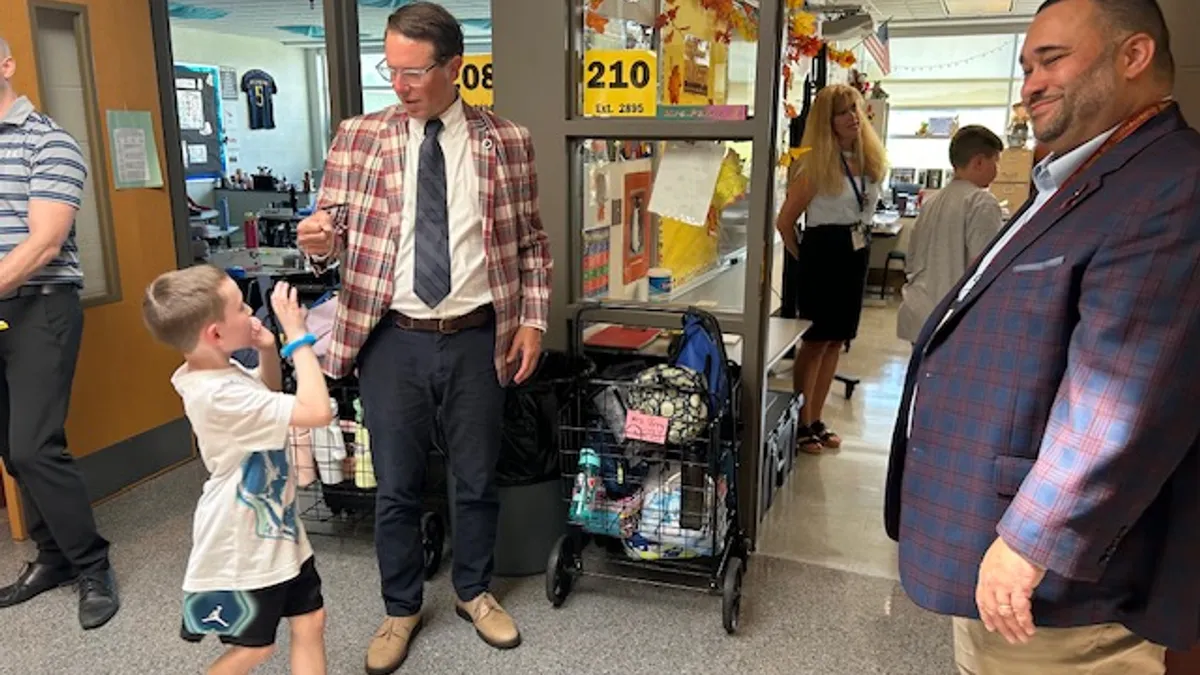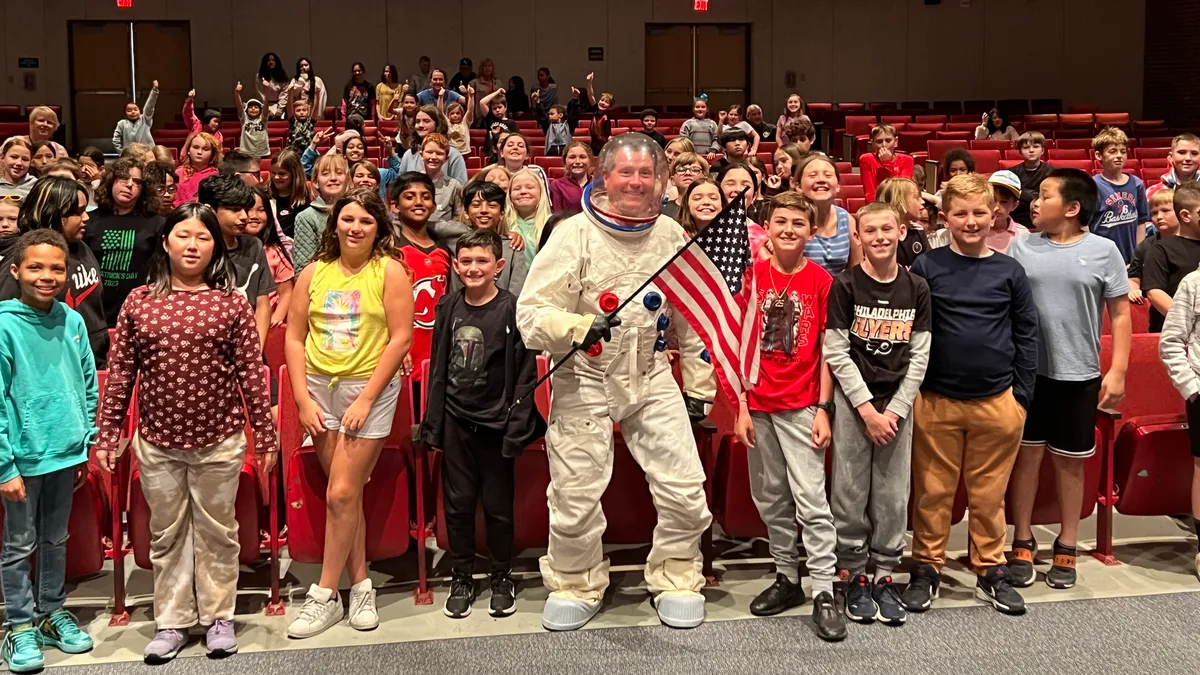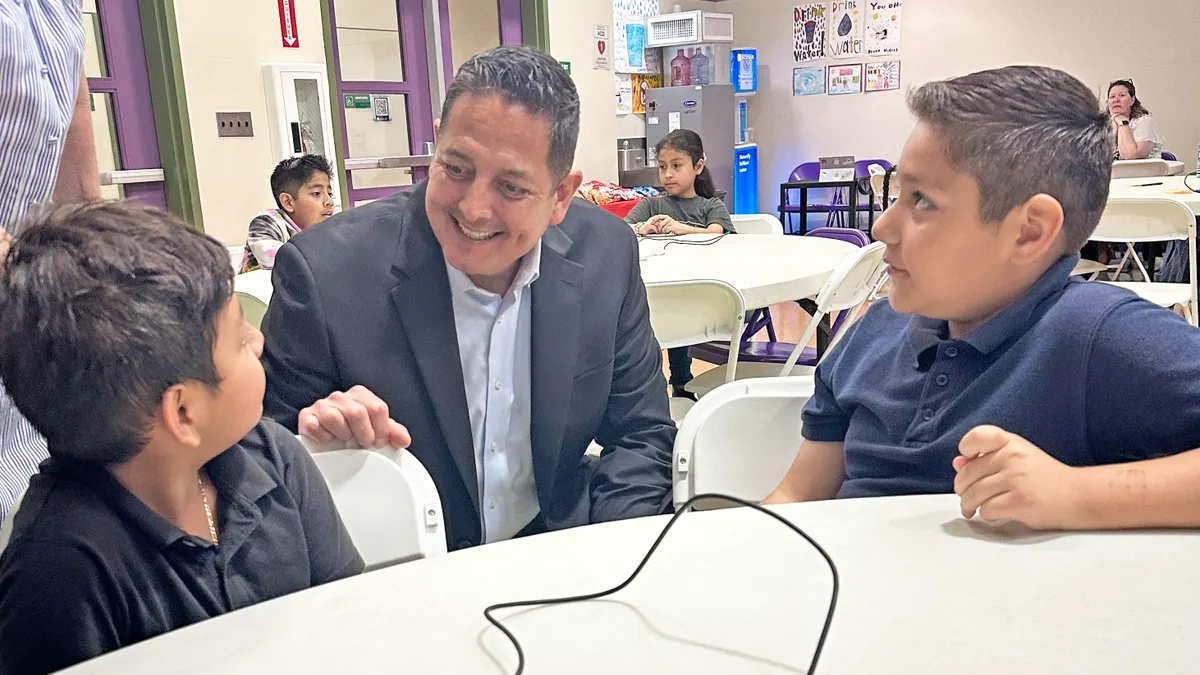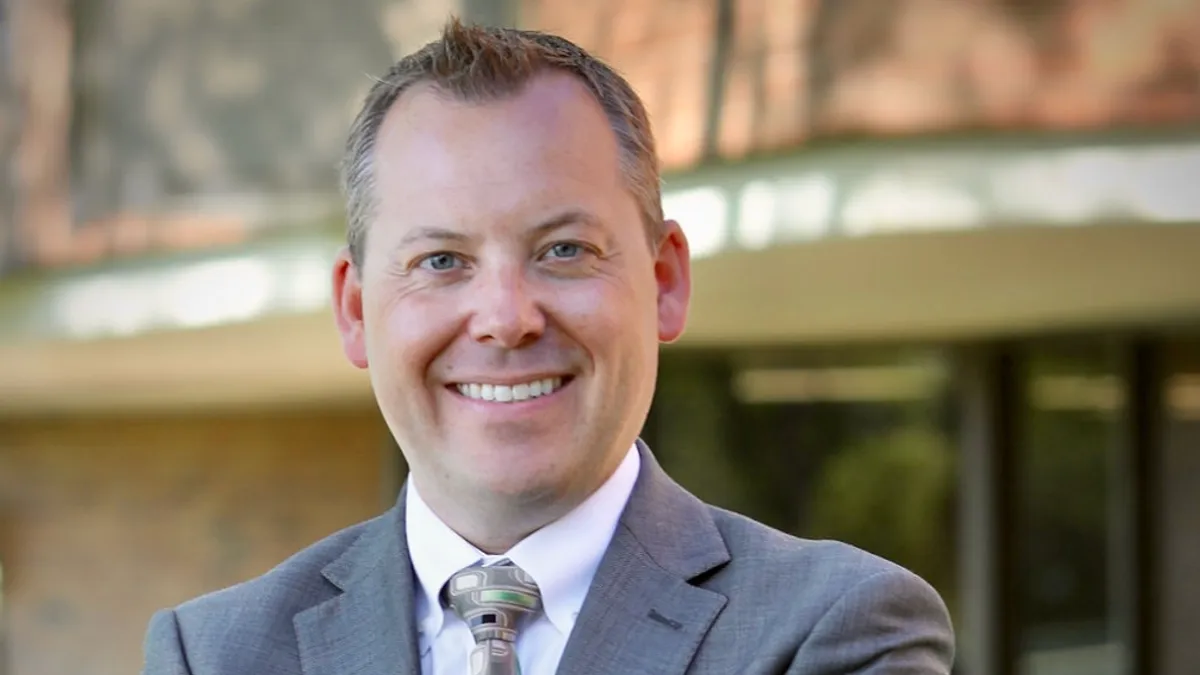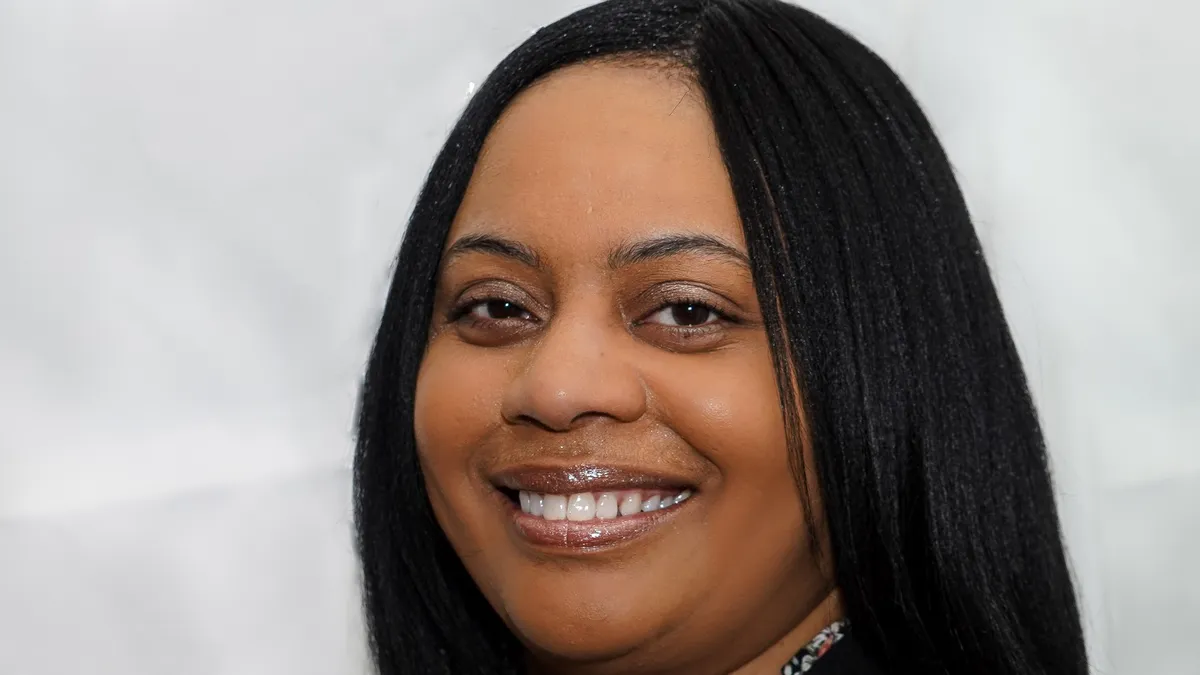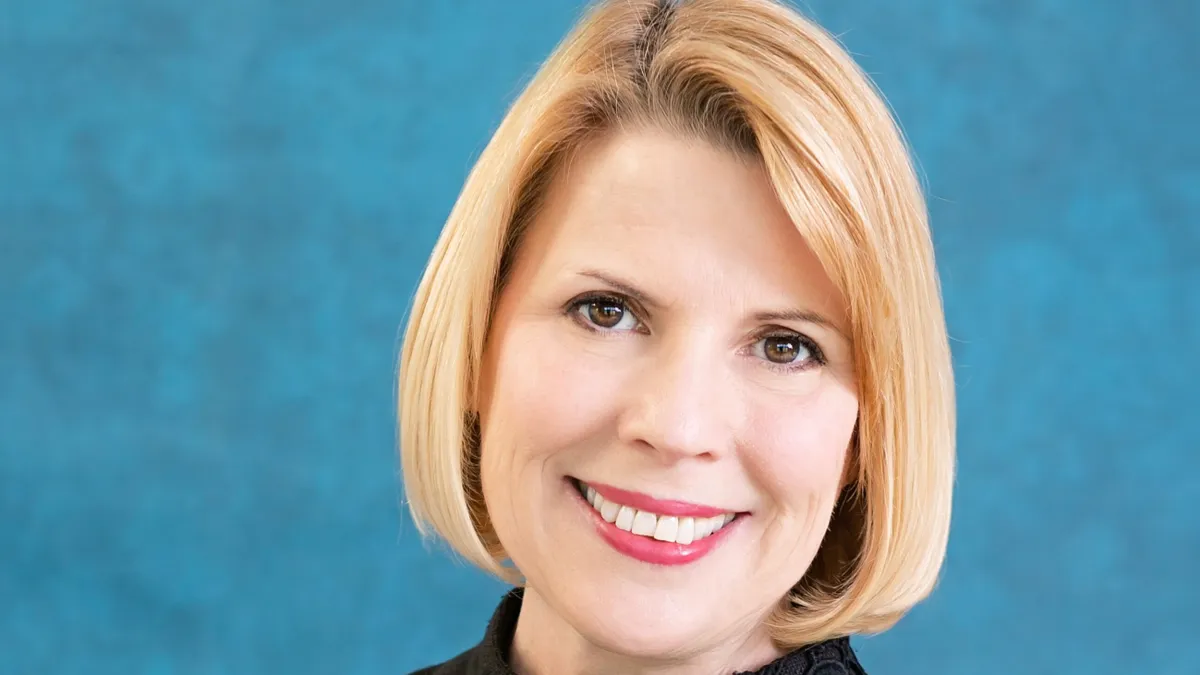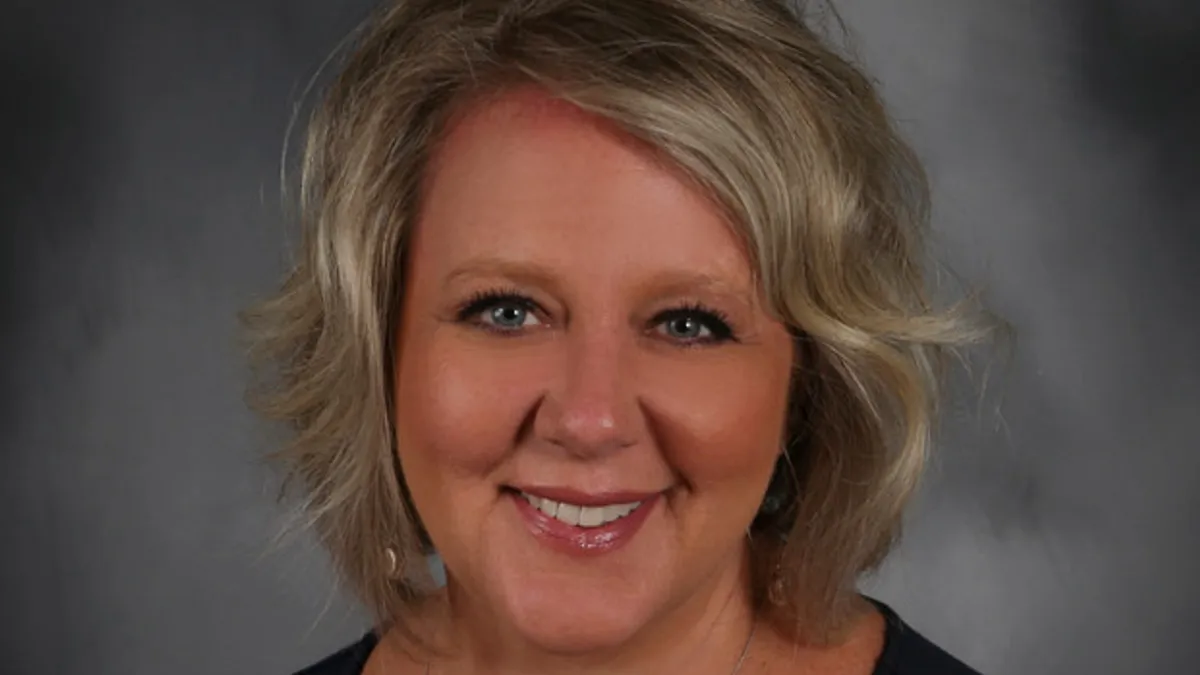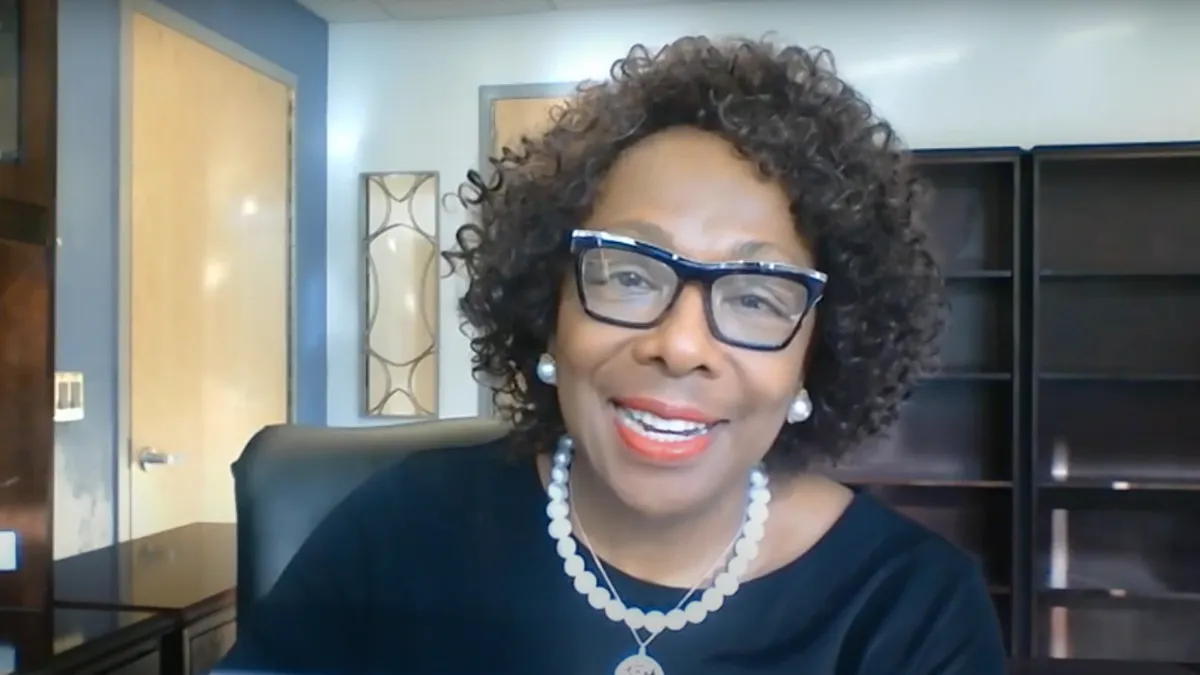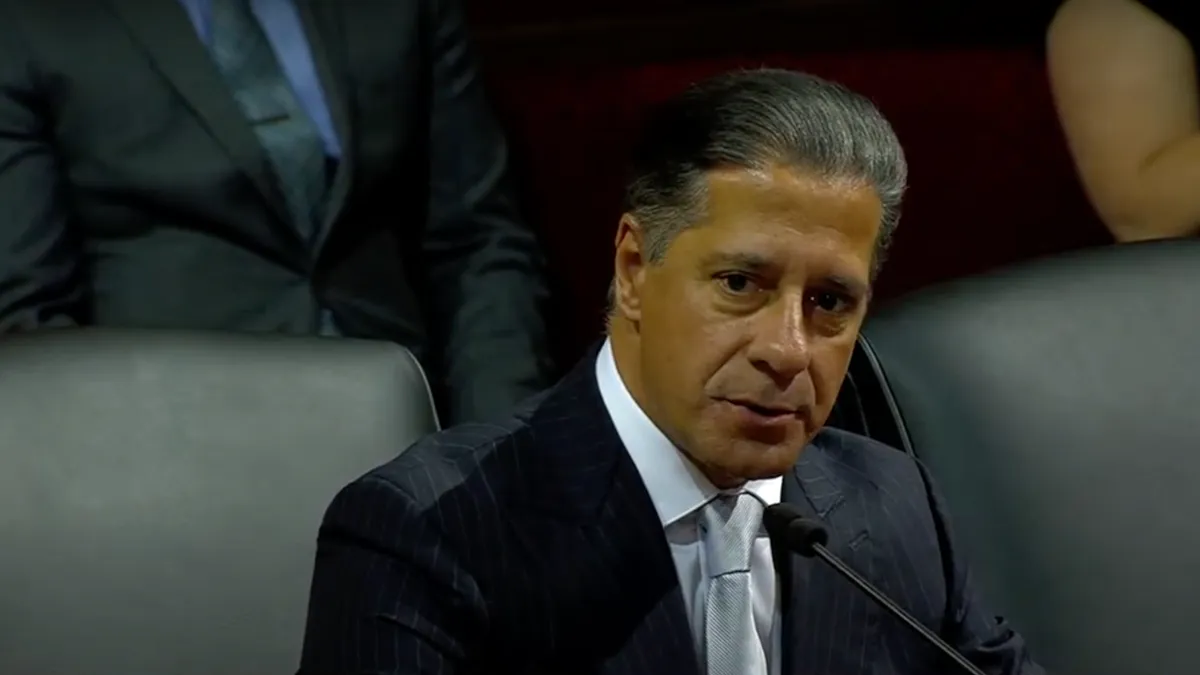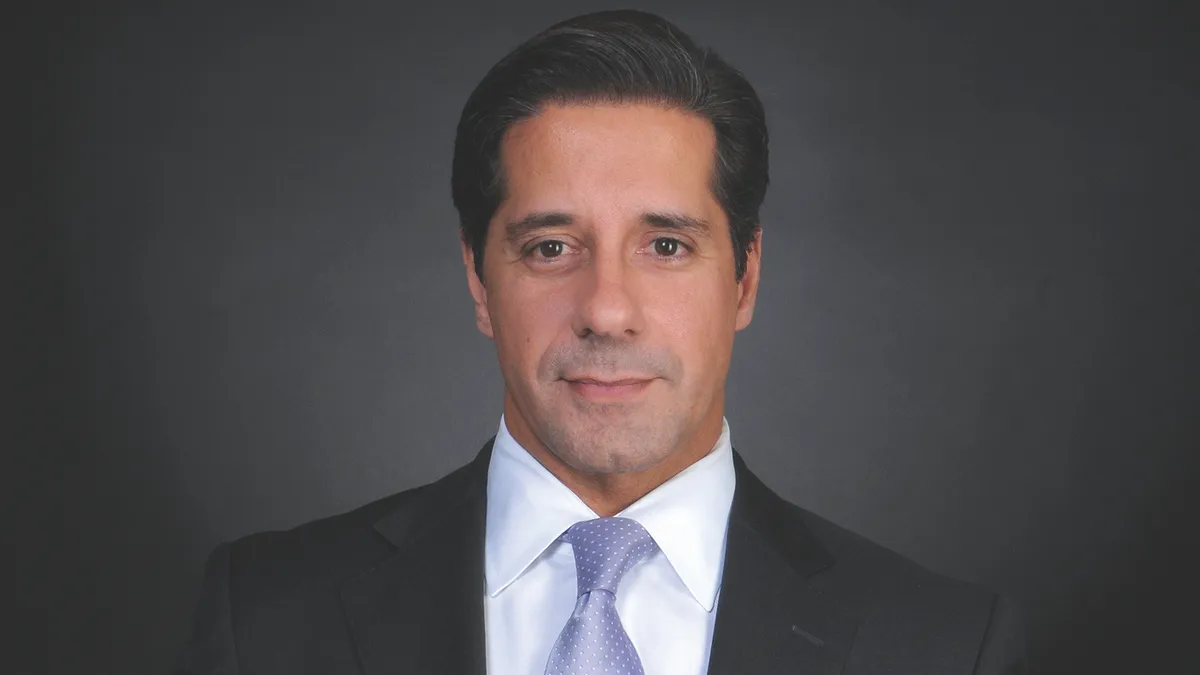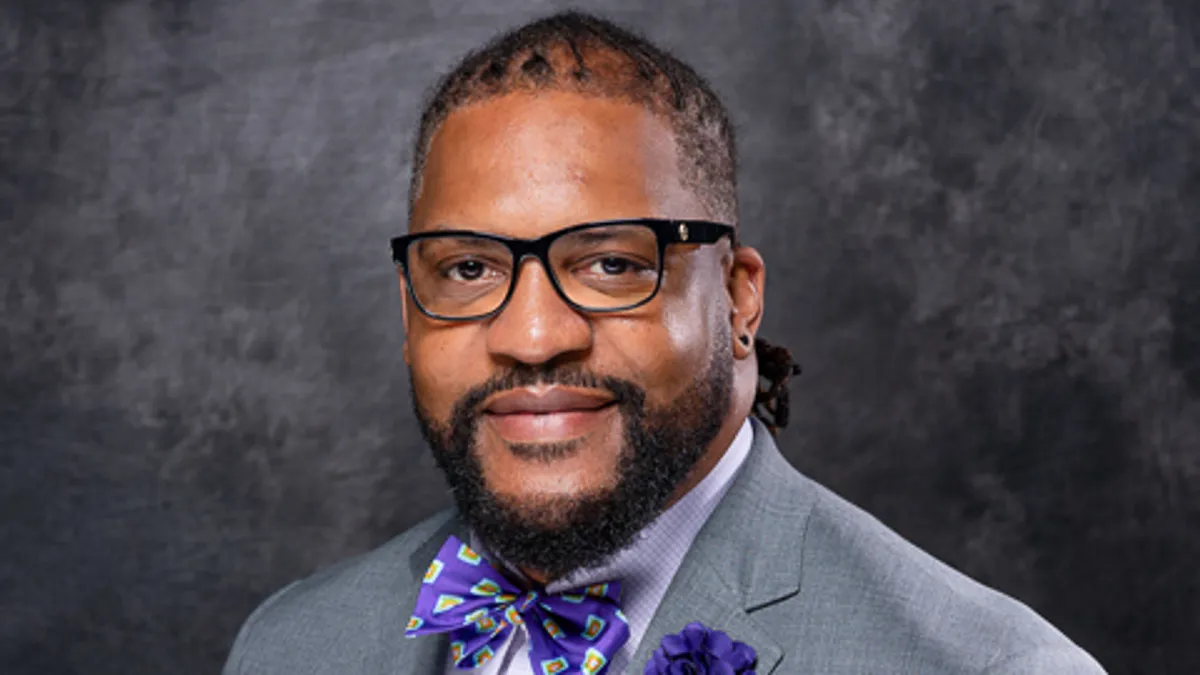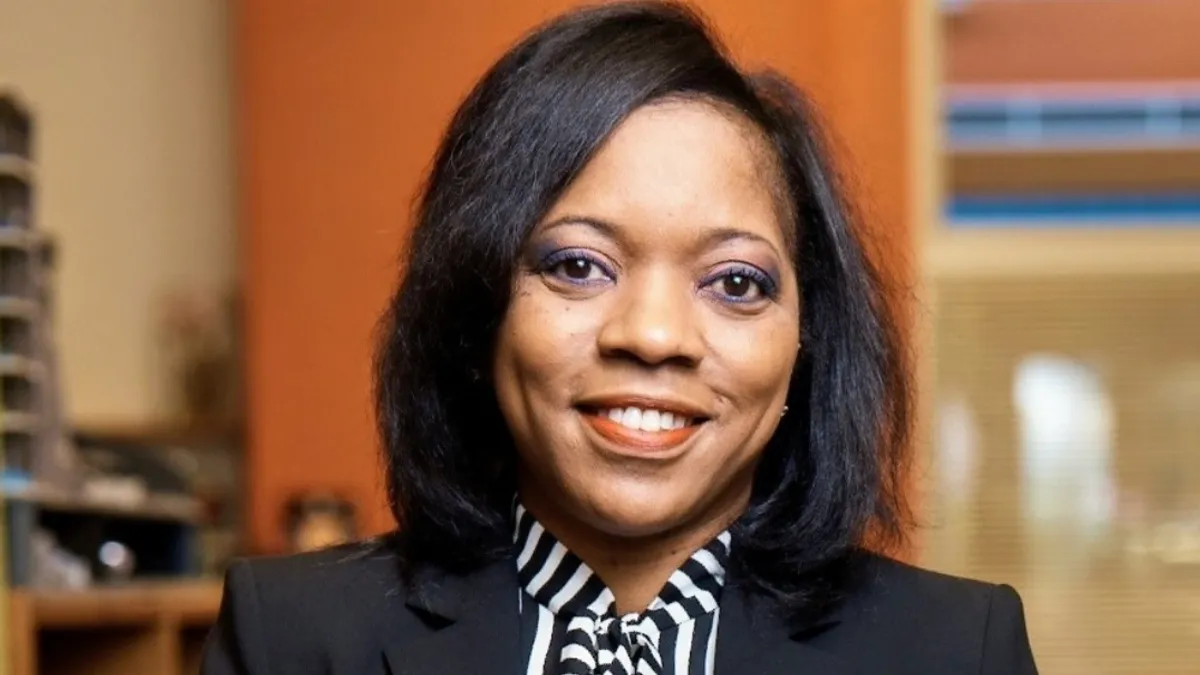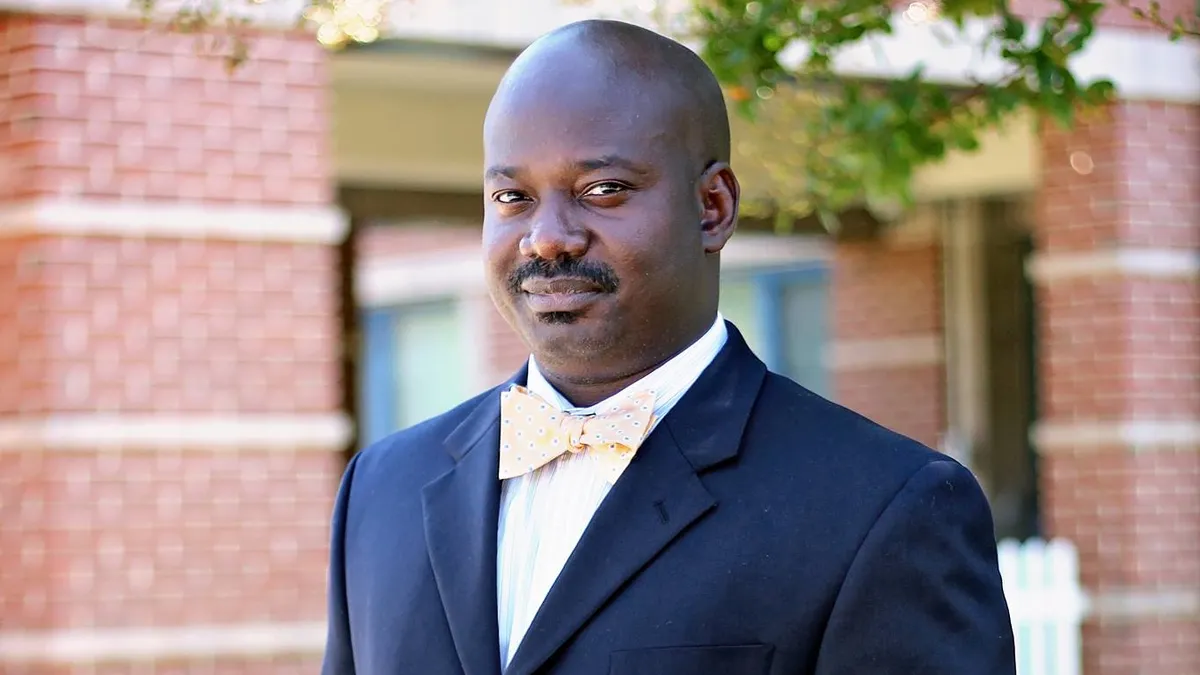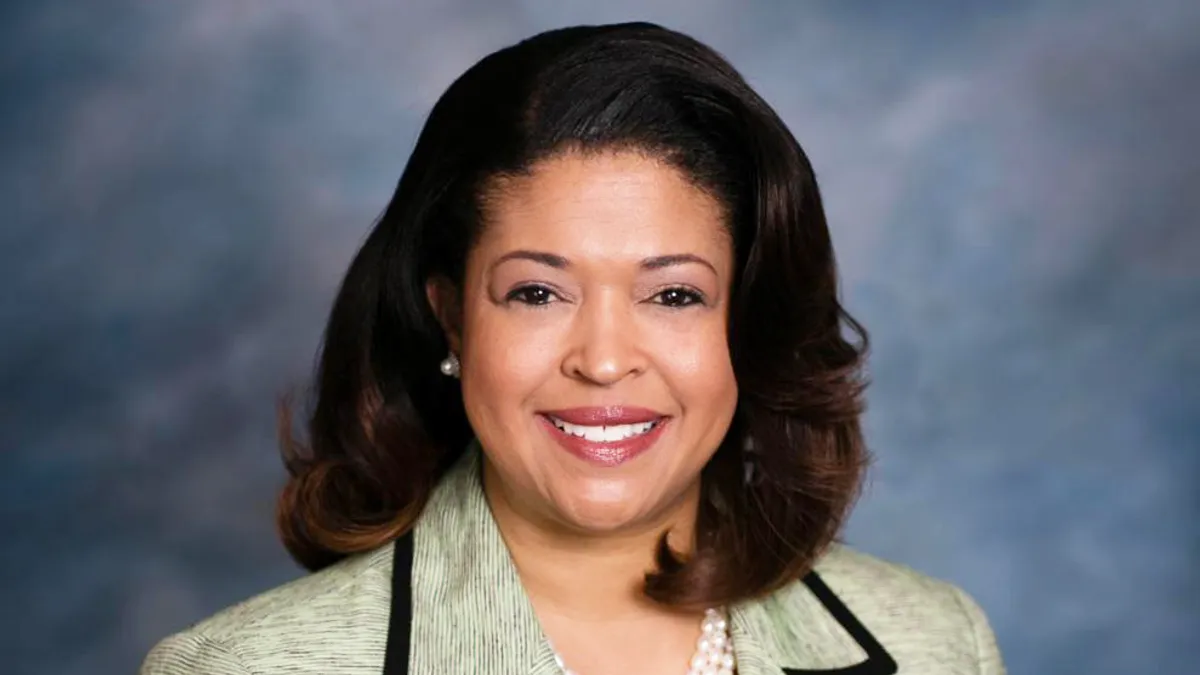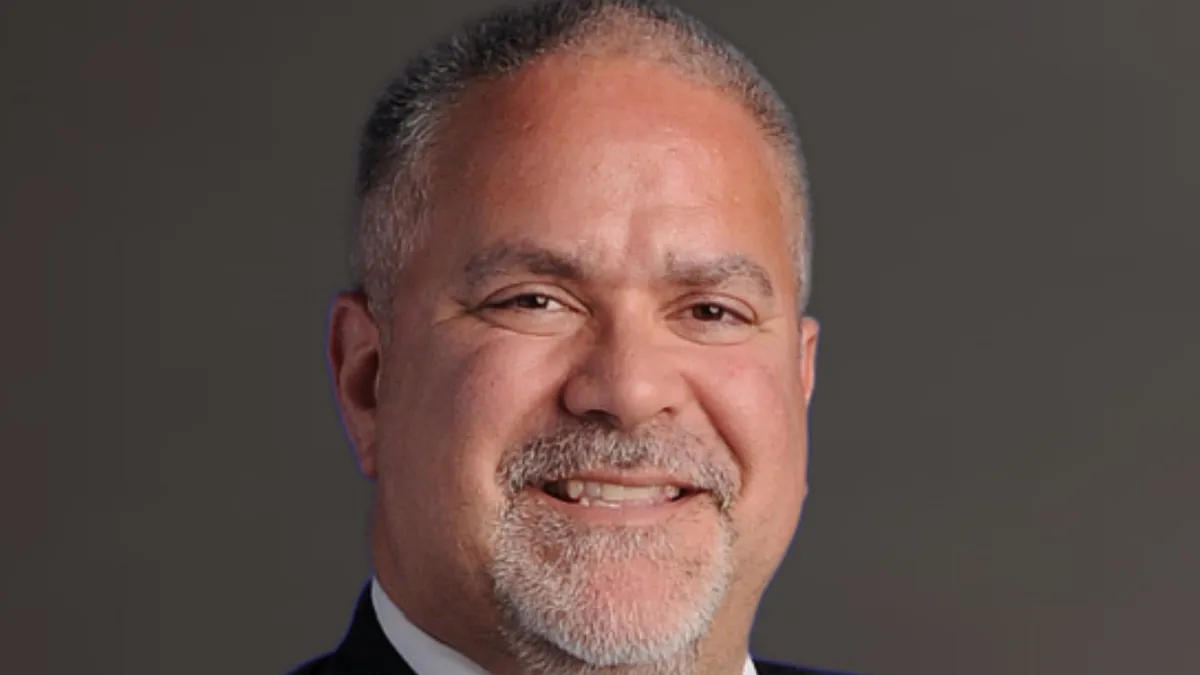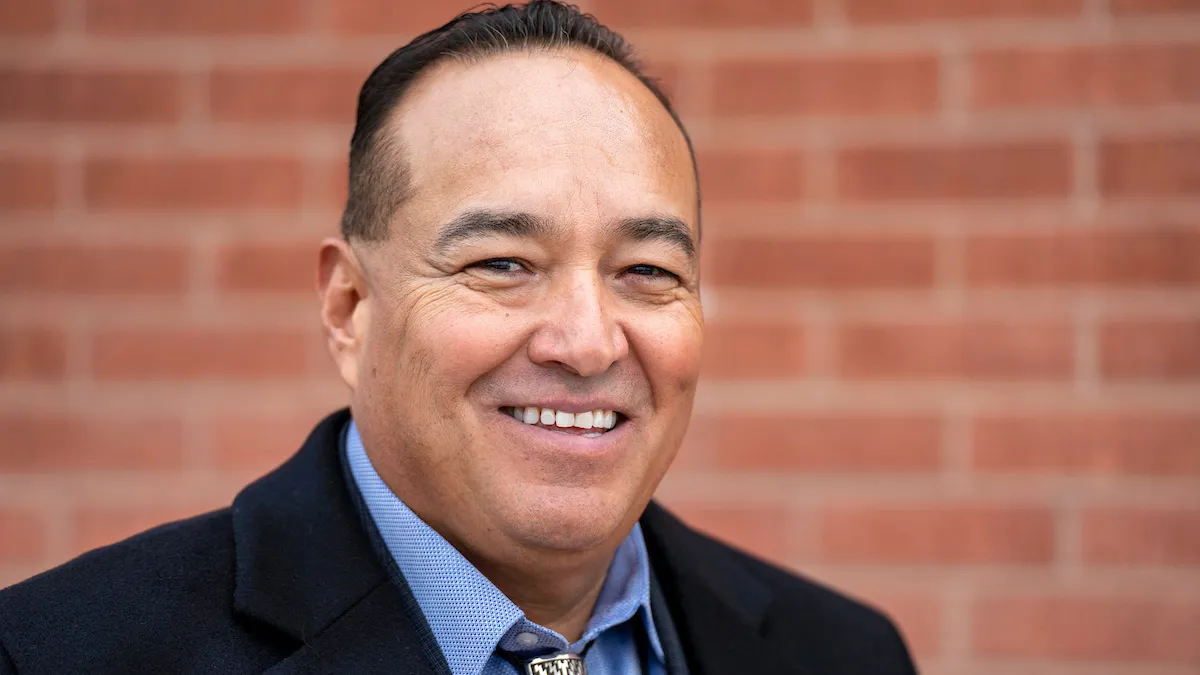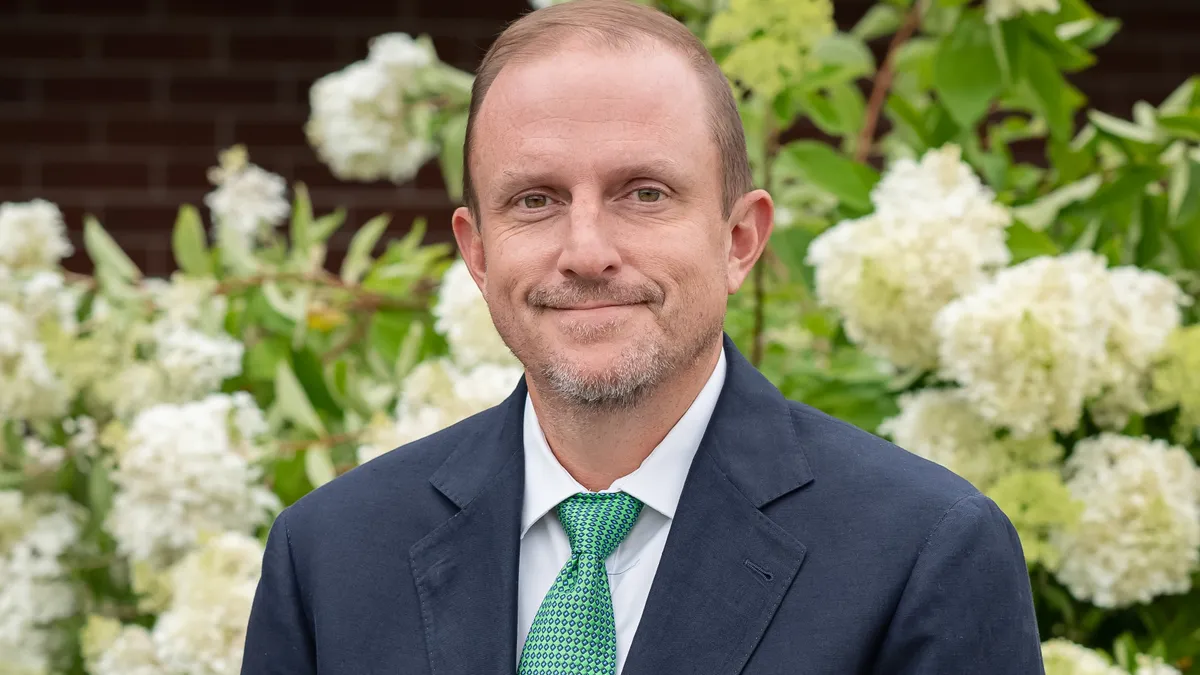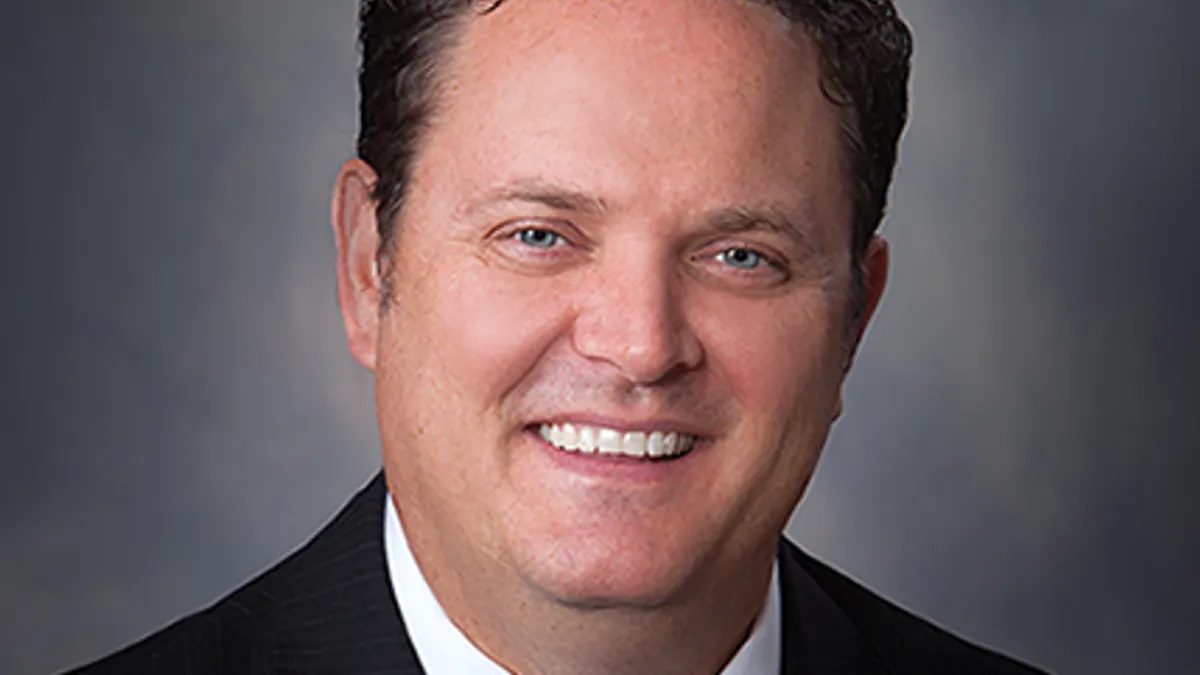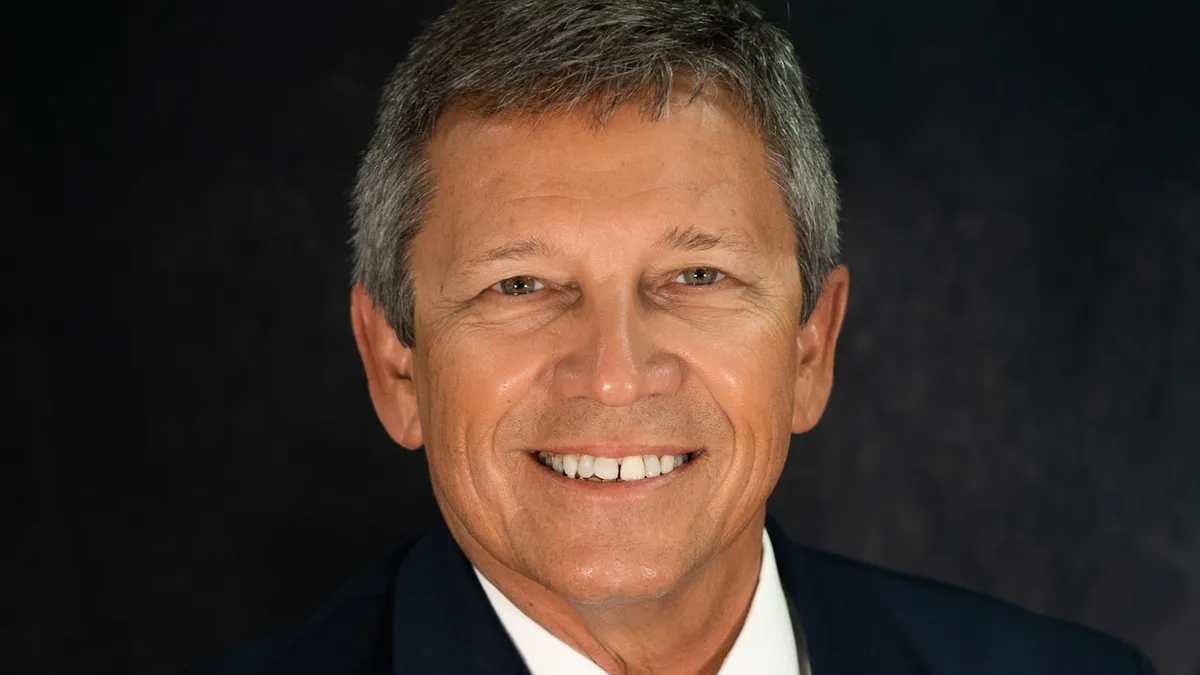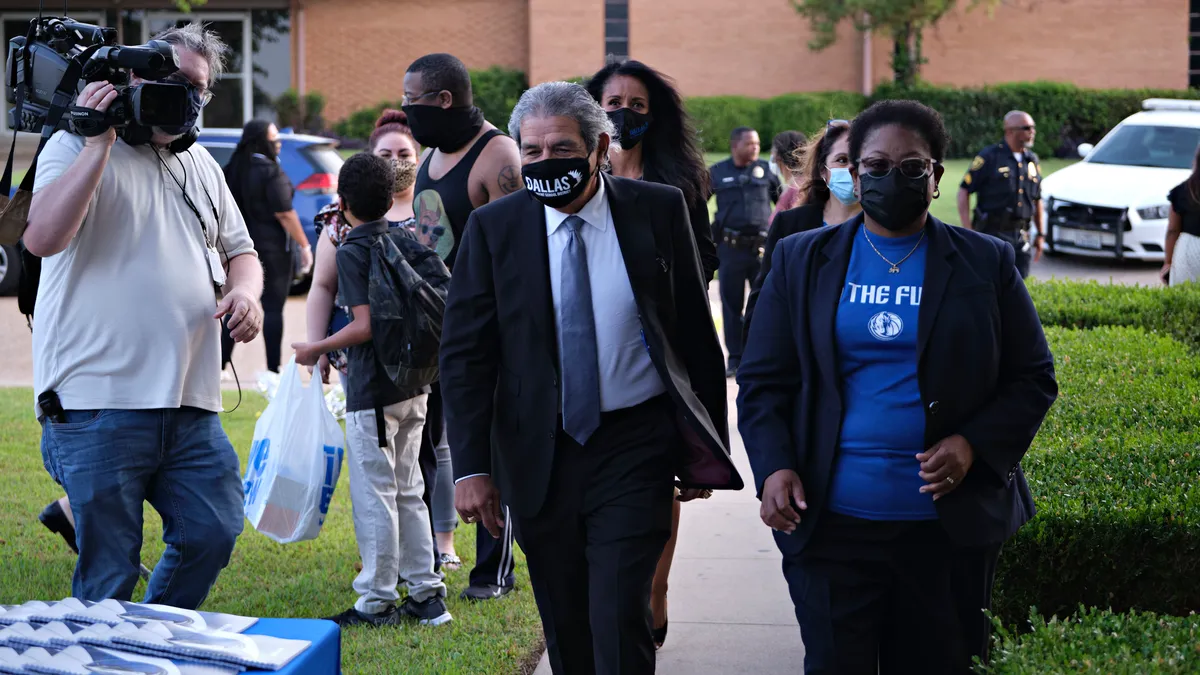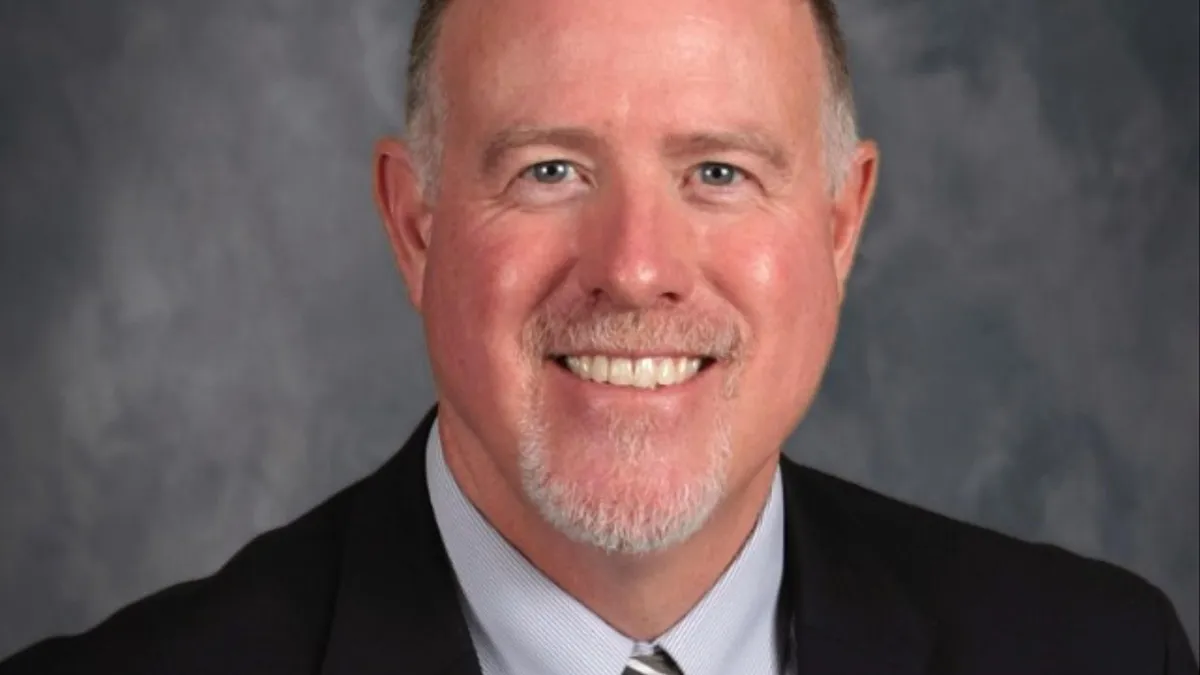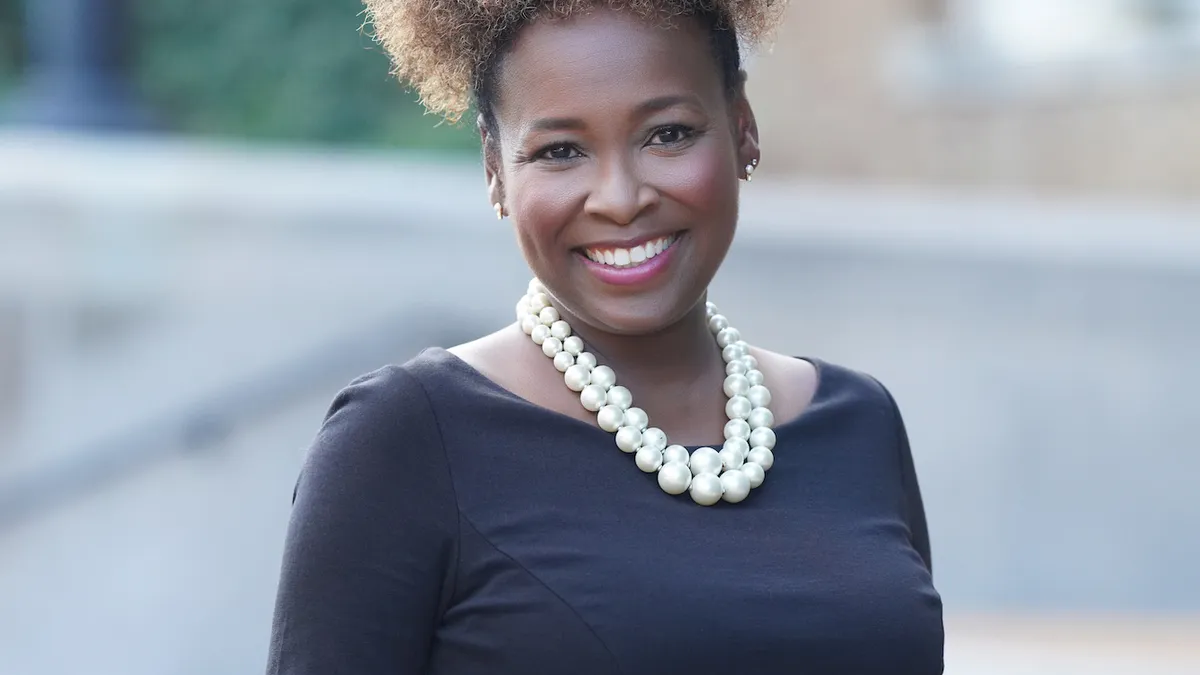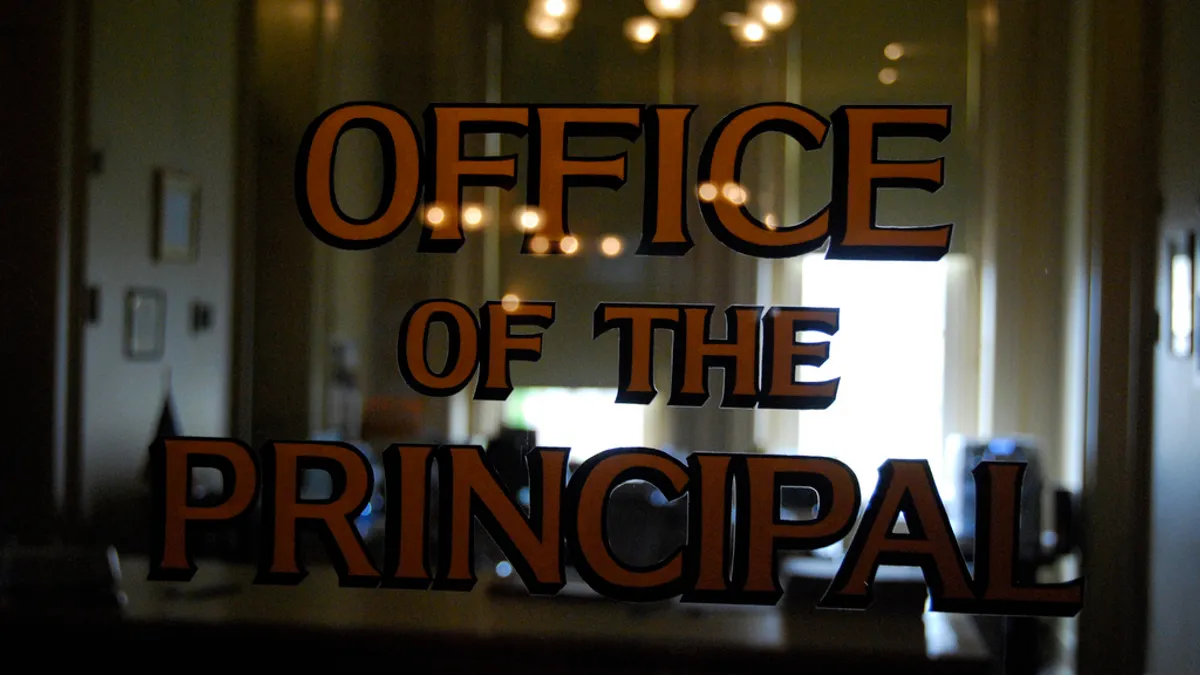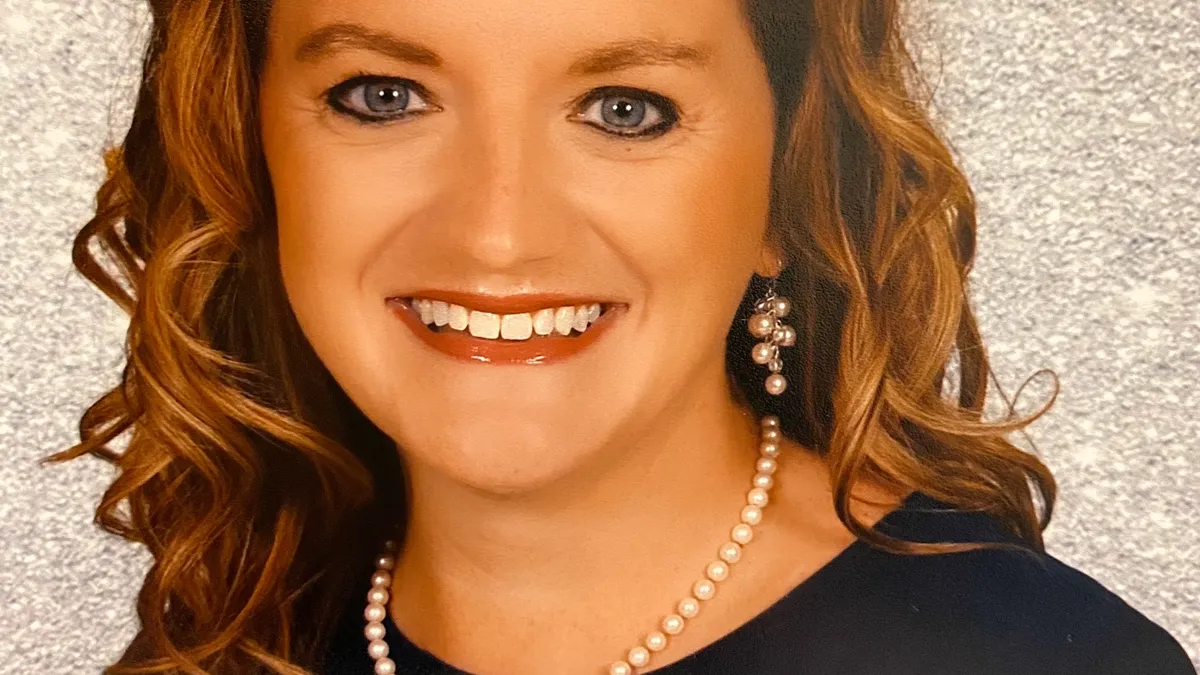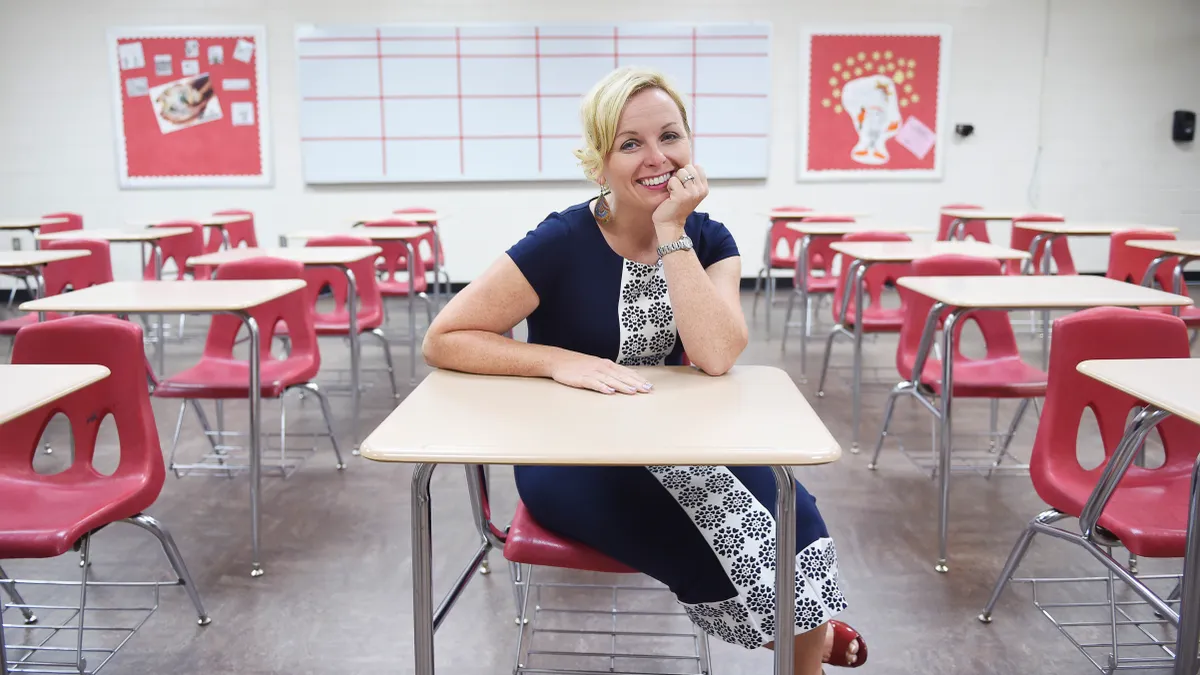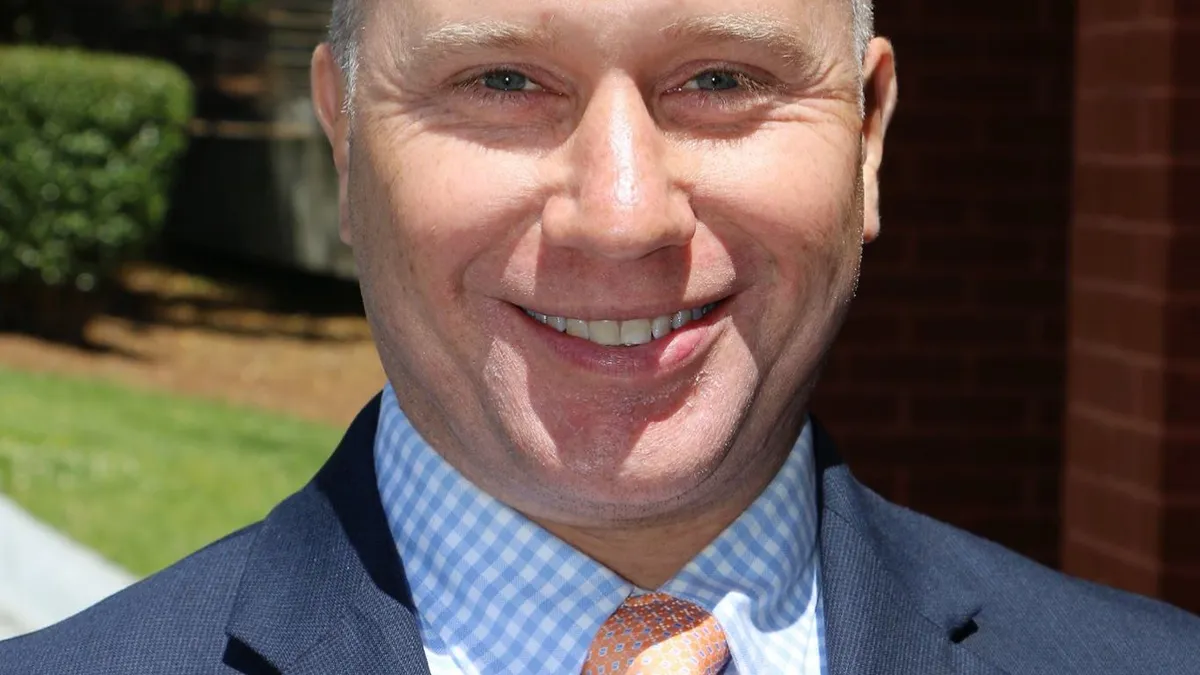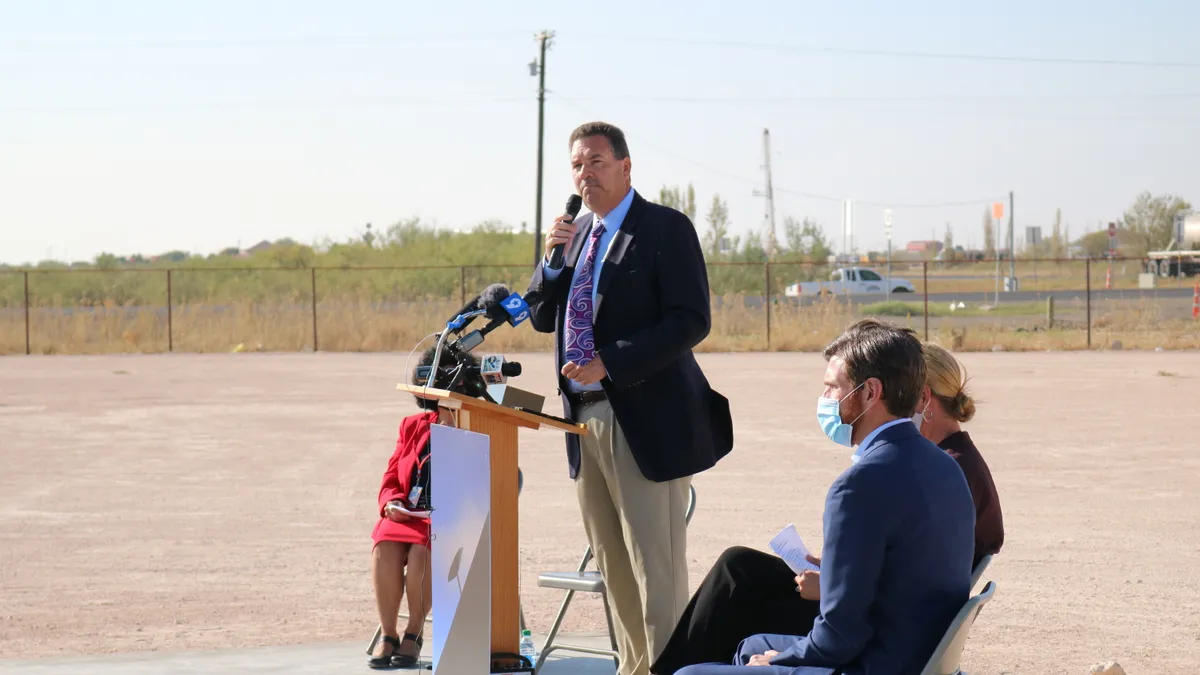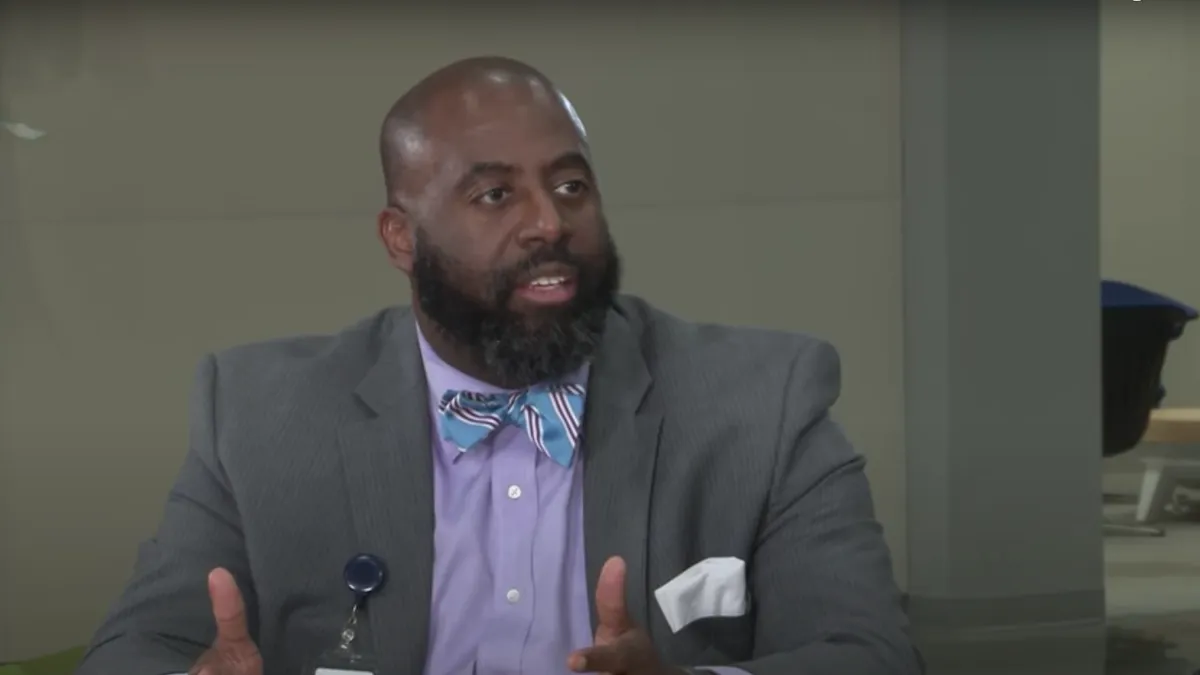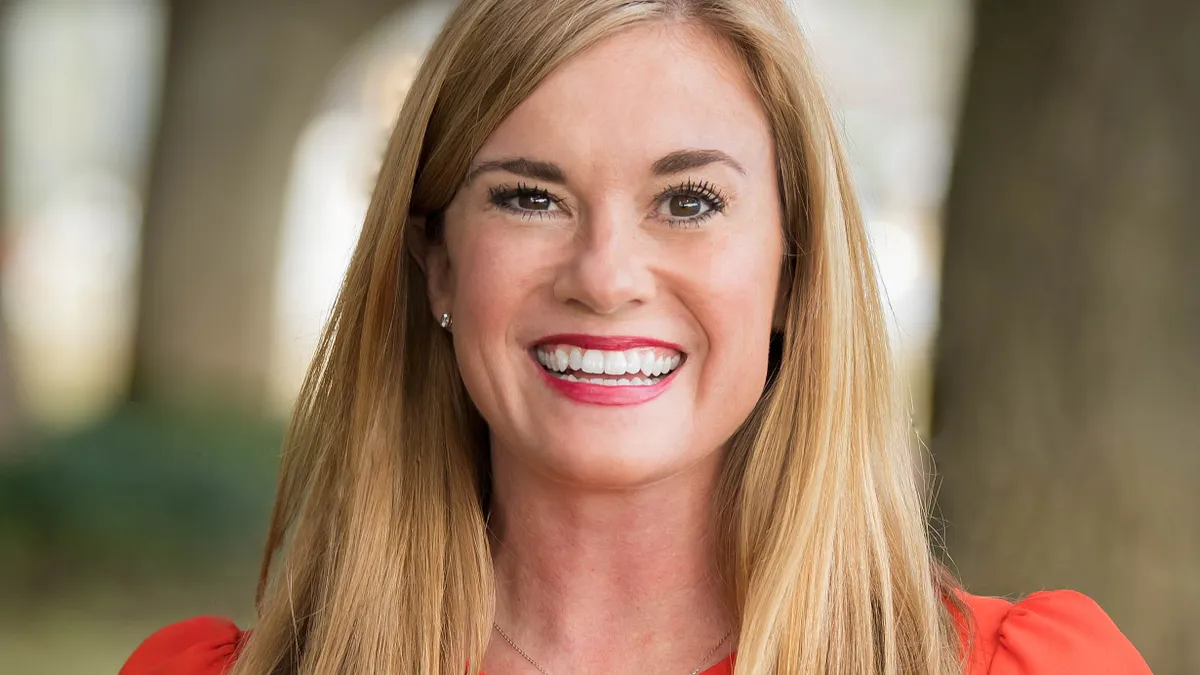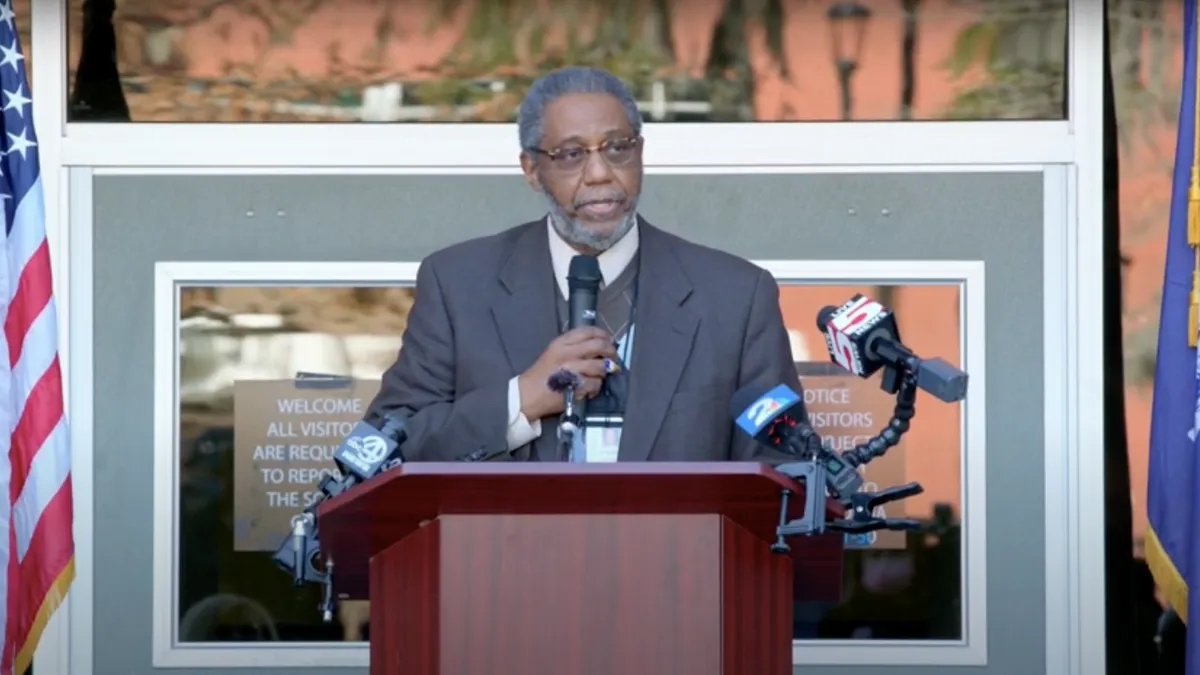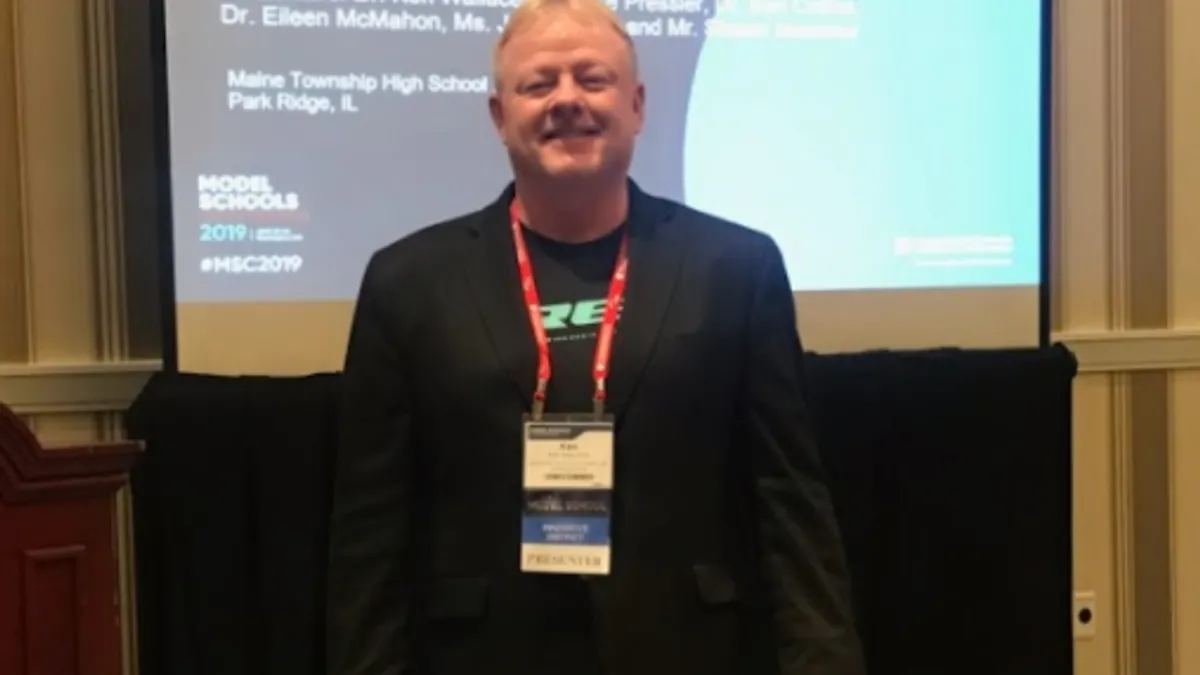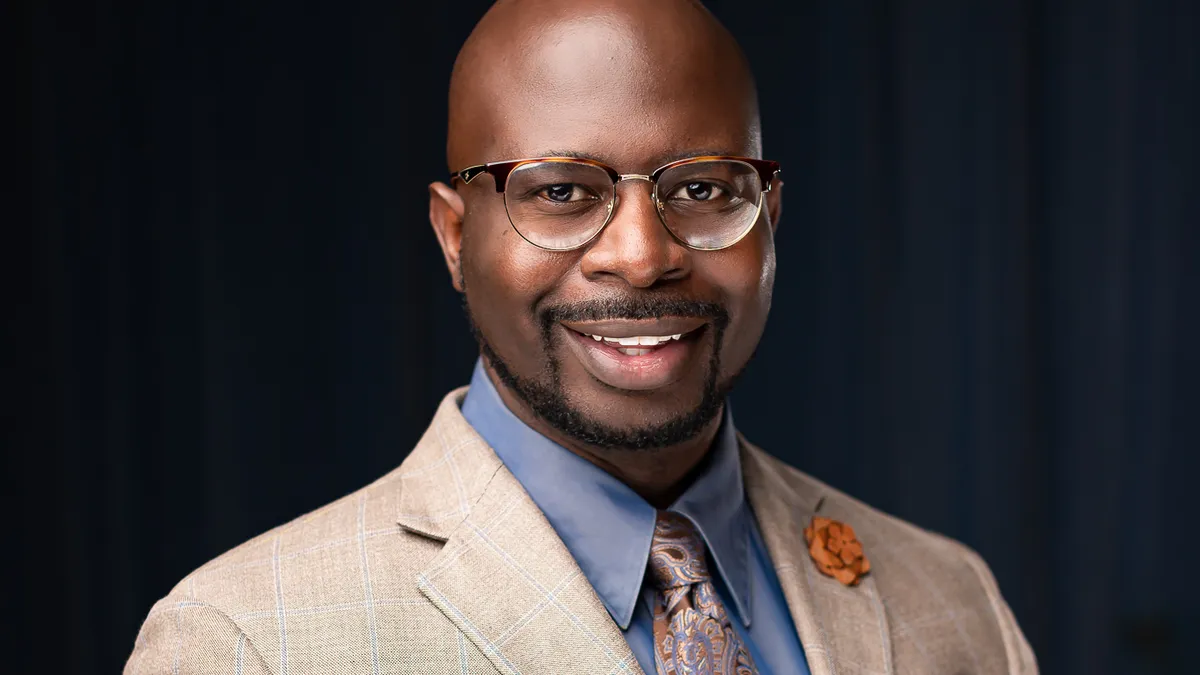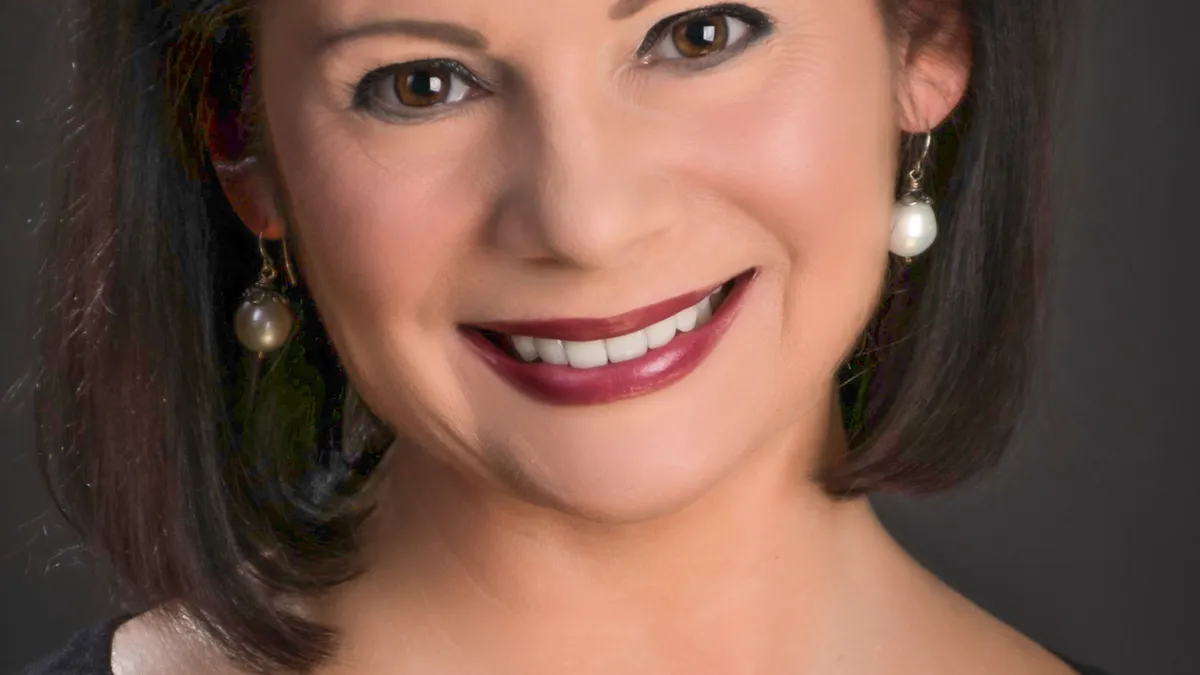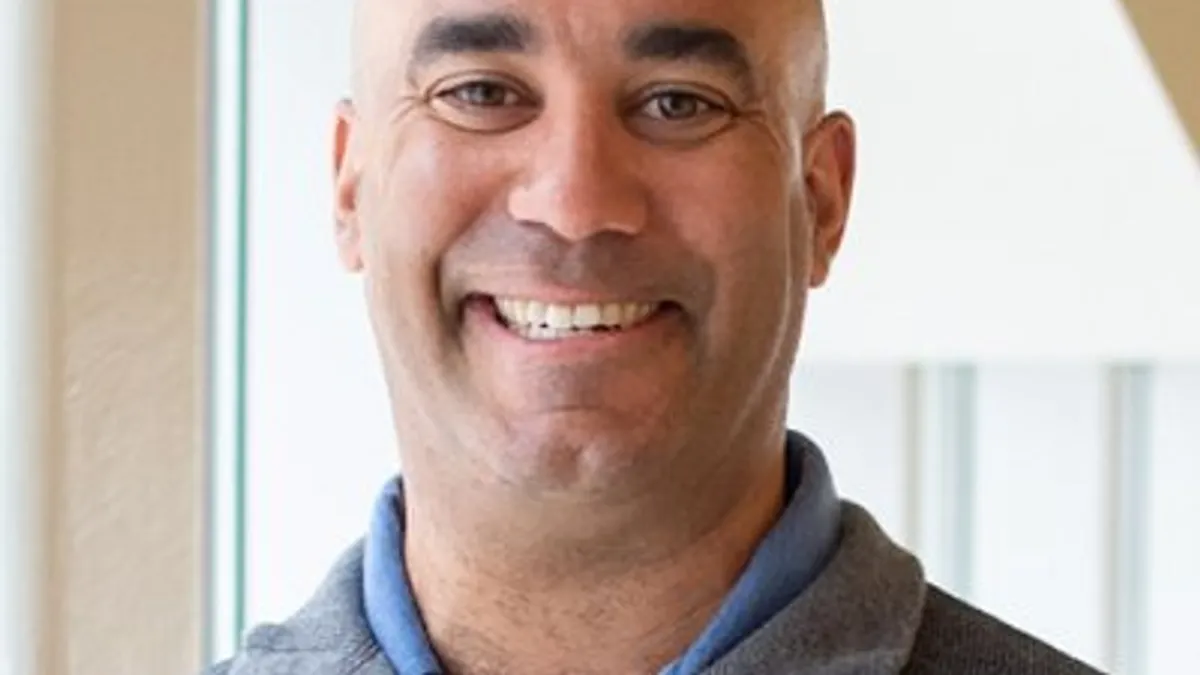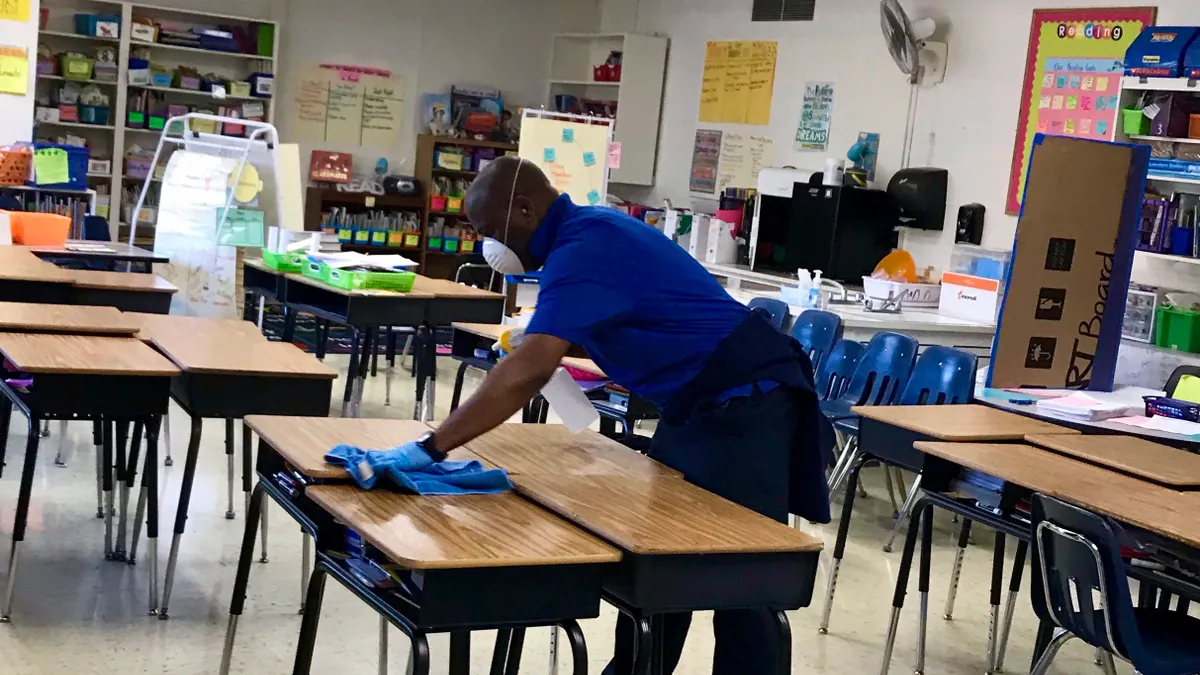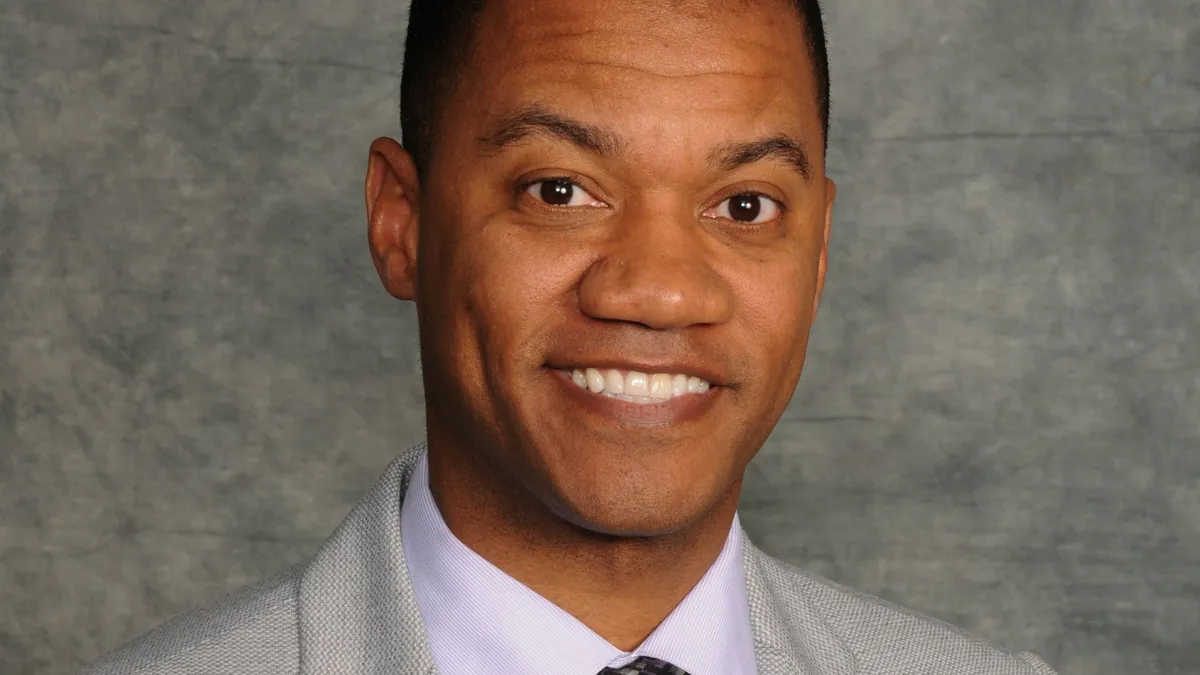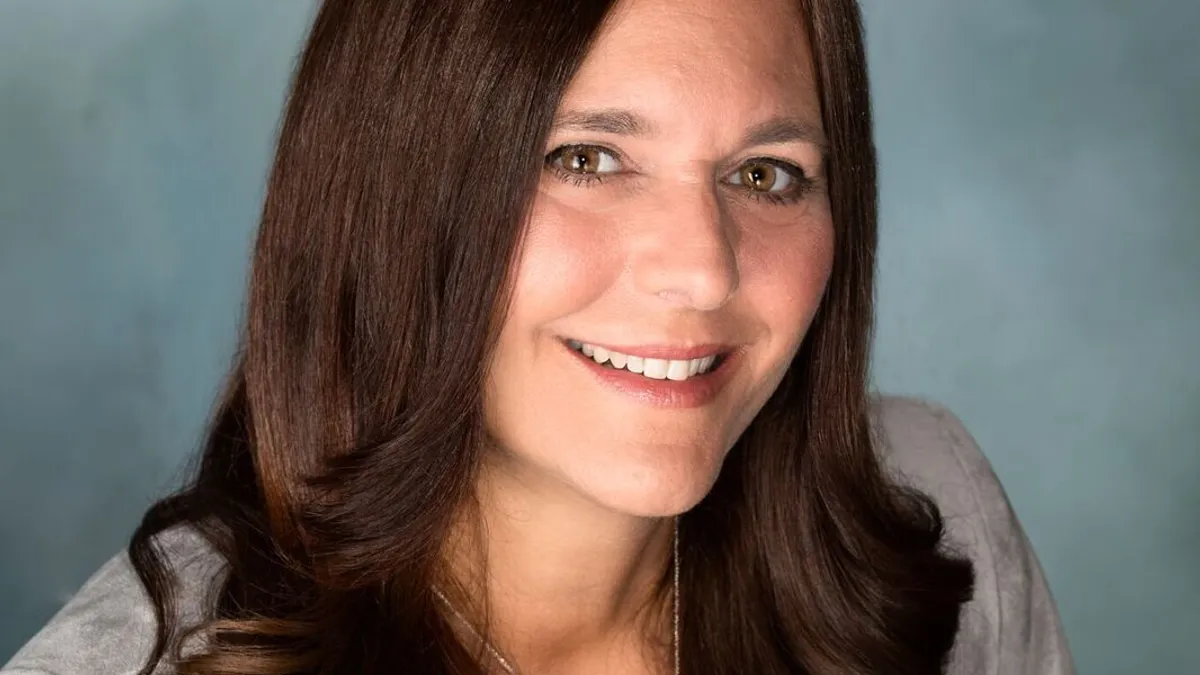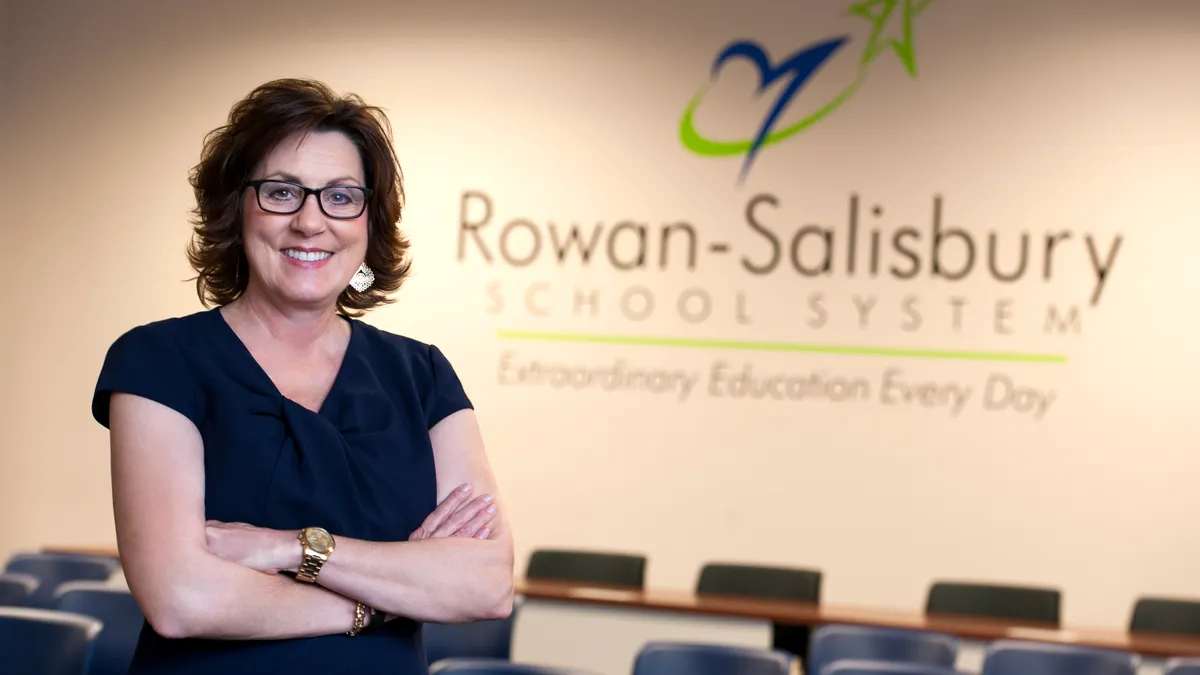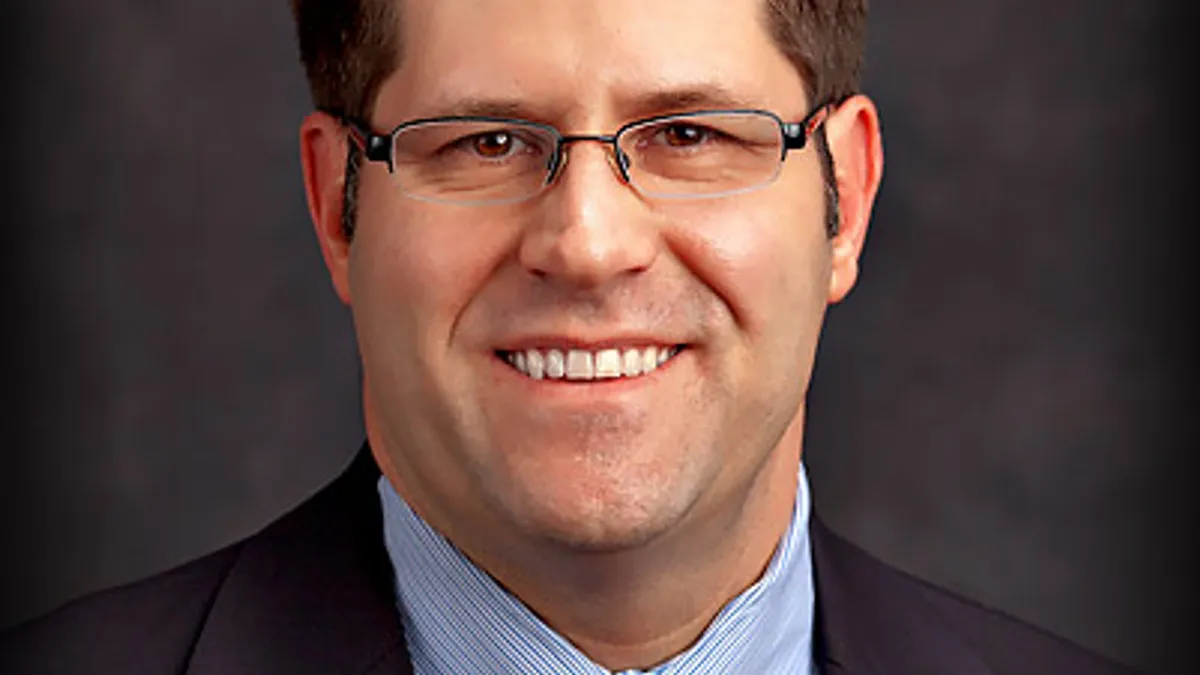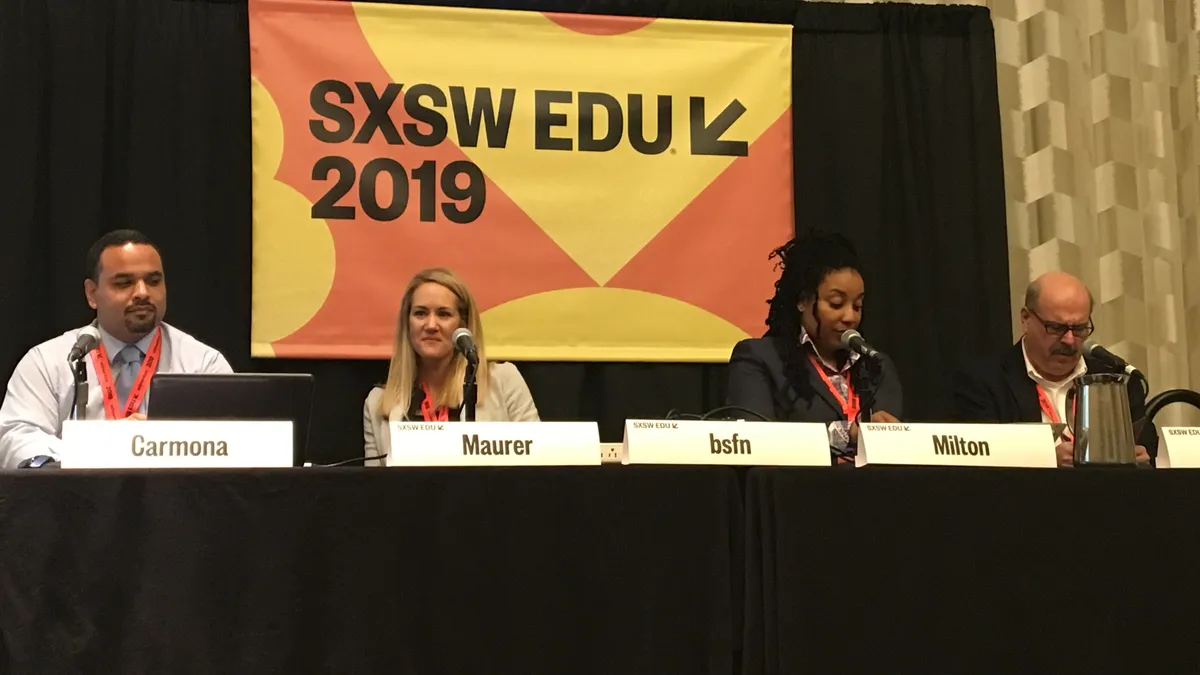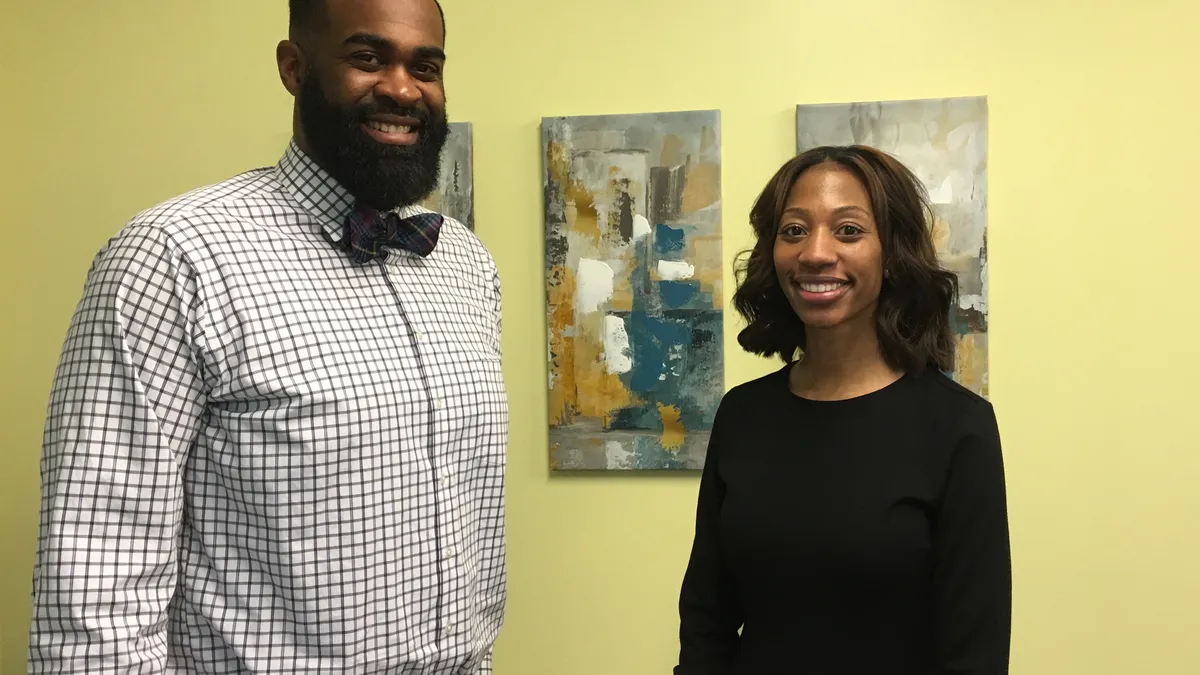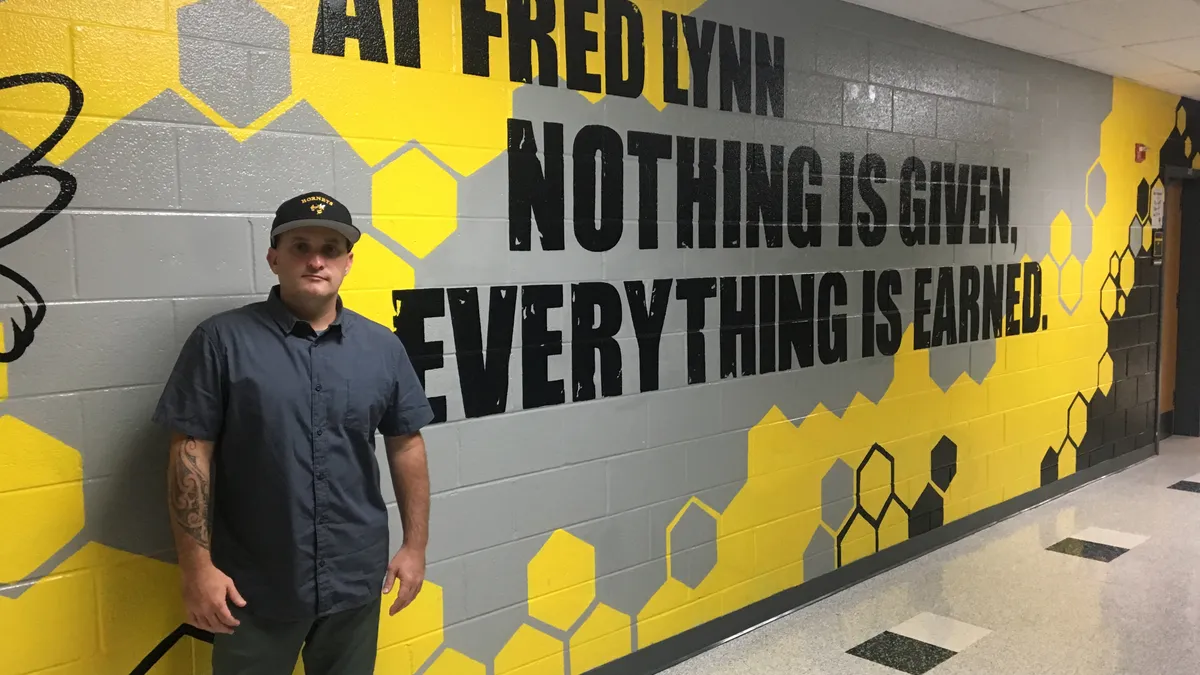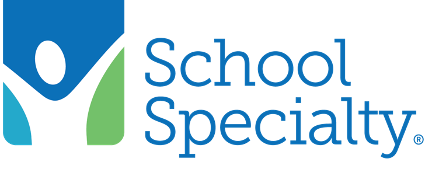Lessons In Leadership is an ongoing series in which K-12 principals and superintendents share their best practices as well as challenges overcome. For more installments, click here.
Now in his 13th year as superintendent of California’s Compton Unified School District, Darin Brawley is an outlier in a time when the average tenure for an urban superintendent is just over 2 ½ years.
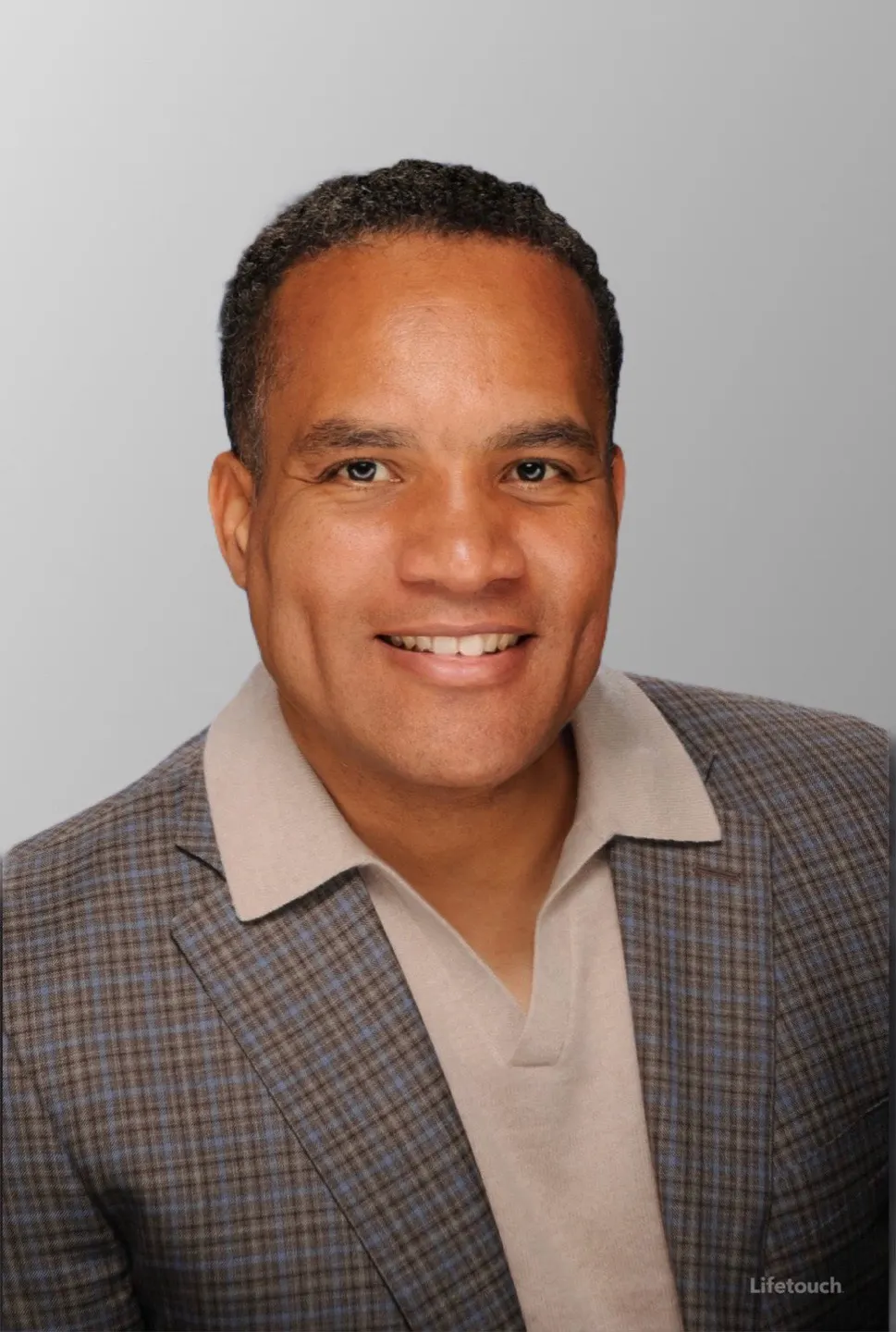
His 17,000-student district — which is 84% Latino, 14% Black and 94.7% socioeconomically disadvantaged — has also been an outlier compared to other districts in the state. Compton, for instance, has seen three consecutive years of growth on the state’s Smarter Balanced assessment, and its high school graduation rate is at 94% — measures that Brawley says largely outperform nearby districts with similar profiles.
We recently caught up with Brawley to learn more about what he considers the secrets to the Los Angeles-area district’s success and the progress he’s overseen.
Editor’s Note: The following interview has been edited for brevity and clarity.
K-12 DIVE: What do you credit your longevity in Compton to?
DARIN BRAWLEY: I think we've done a great job producing results, turning the district around. When I first got here, our graduation rates were at 58%. Our A-G completion rates were at 12%. [A-G is a uniform minimum set of coursework requirements for admission as a freshman to California State University and University of California system campuses.]
Fast forward to today, our graduation rates are at 94%, and our A-G completion rate is at 76%. Simply put, there's no one in Los Angeles County serving similarly situated students that is doing it better than us, nor is there any school district in the state that is doing it better than us when it comes to serving similarly situated students.
I think the results have a lot to do with that longevity.
We have a district that is bar none to others when it comes to providing a STEAM [science, technology, engineering, arts and mathematics] education for students. I challenge you to find another school district that is doing what Compton Unified School District is doing for students in the area of STEAM. We literally begin with coding in preschool. We offer robotics, eSports, drones, computational thinking, computer science, maker spaces.
We're constantly reimagining what it takes for our students to be successful beyond their journey here. By the time they leave high school, they will be able to step into a job or continue their study somewhere else in terms of the opportunities we're providing to them.
In terms of progress and successes, Compton made historic gains on the 2025 California Smarter Balanced assessment with an 8-point increase on ELA and a 6.4-point increase on math [year over year]. That was also the third straight year of growth. To what do you credit those continual gains?
BRAWLEY: Yeah. I mean, we were growing before the pandemic, and it kind of gets lost in the mix, because a lot of districts haven't grown much since the pandemic. Some haven't even returned to their original scores they had pre-pandemic. We rebounded very fast.
There's a lot we need to credit to that. First off, we have a fabulous teaching staff, and we also have great administrators and great students who work toward the common goal of continuous improvement. We have a process in place that really is modeled after Malcolm Baldridge’s performance excellence standards, where we're constantly benchmarking our performance against our surrounding competitors — aka surrounding school districts — and identifying those districts that we want to perform better than.
We take the time to explicitly teach academic language that students will need to know to do better.

Darin Brawley
Superintendent, Compton Unified School District
When we first started the [improvement] process, almost all of our surrounding districts were performing much better than Compton Unified School District, and we began benchmarking our performance and developing smart goals to get better in ELA and math. Over time, we've been able to surpass the vast majority of everyone that we benchmark our performance against.
It's a testament to the process that's in place, the establishment of smart goals, the implementation of interventions in classrooms, and a focus on academic language students need to understand in order to be able to answer questions the right way instead of just marching through the curriculum.
We take the time to really lay out the curriculum so students like our English language learners are not confused by words that they've never seen. We're constantly exposing them to the academic language of assessments, which drastically differs from the academic language of curriculum.
You may know how to do a problem in language arts or math, but if you've never seen a word, the word might throw you off, and you might become overly focused on the words that you don't know. Instead of attacking the problem from what you do know, you get bogged down with this “I don't know what this question is asking me” routine.
So, we take the time to explicitly teach academic language that students will need to know to do better.
When it comes to the interventions and other programming that you put in place to move toward that progress — whether it's the in-class tutors, expanded learning time before and after school, targeted professional development — how did you decide which area to focus on first and how to move forward from there?
BRAWLEY: Well, the state of California has done a very good job of providing resources and laying out what the expectations are on the SBAC [Smarter Balanced Assessment Consortium] or the CASPP [California Assessment of Student Performance and Progress].
We took it step by step.
Let's say you're a teacher in Compton Unified School District. You might start your day off with problems of the day. Those problems of the day, when we first started, would have all been "claim one" — or conceptual understanding — problems. [The CASPP uses four levels of “claims” to signify the depth of a problem or question.]
Over time, what we did was merge in claim two and three problems — where kids are able to problem-solve and communicate their reasoning — into the problems of the day.
So you might have two or three problems of the day, maybe five total. You're going to explicitly teach maybe three of those with the students, and then you're going to turn students loose on the last two for that day to solve on their own. Instead of all five of those questions being claim one problems, now it's a combination of claim one, two and three problems.
Last year was the first year where we had a huge emphasis on performance tasks, where kids really have to read through different sources and come up with solutions and communicate that through their problem-solving skills.
It was a constant layering of things on top of one another until we got to a point where we felt that this was what was necessary in order for students to truly understand how to attack problems, whether they were in ELA or math, in terms of the types of tasks they were going to be involved with when it came to taking a state assessment.
That's really something that is built within the curriculum throughout every single day. At the end of the day, it's really an instructional process where teachers are using the performance task to teach students how to attack those types of questions, so when they see it later on, it should not be a surprise in terms of all the different types of things that they have to do.
Correction: A previous version of this story misstated the percentage of economically disadvantaged students in Compton USD. The correct percentage is 94.7%.


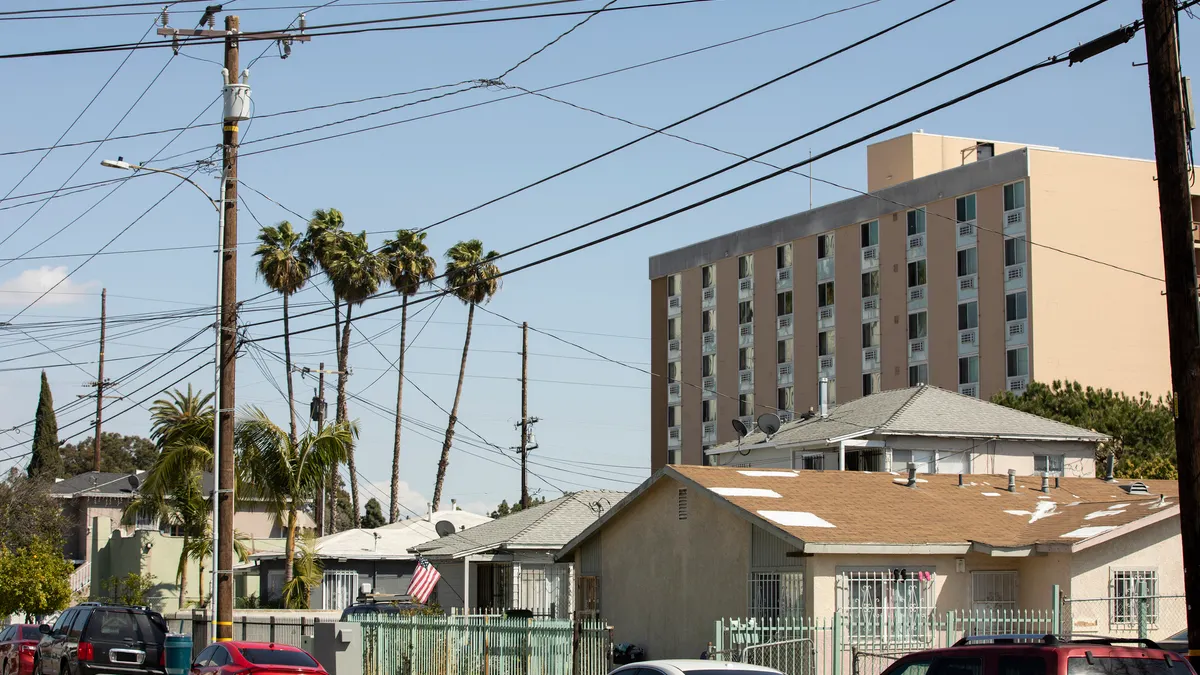

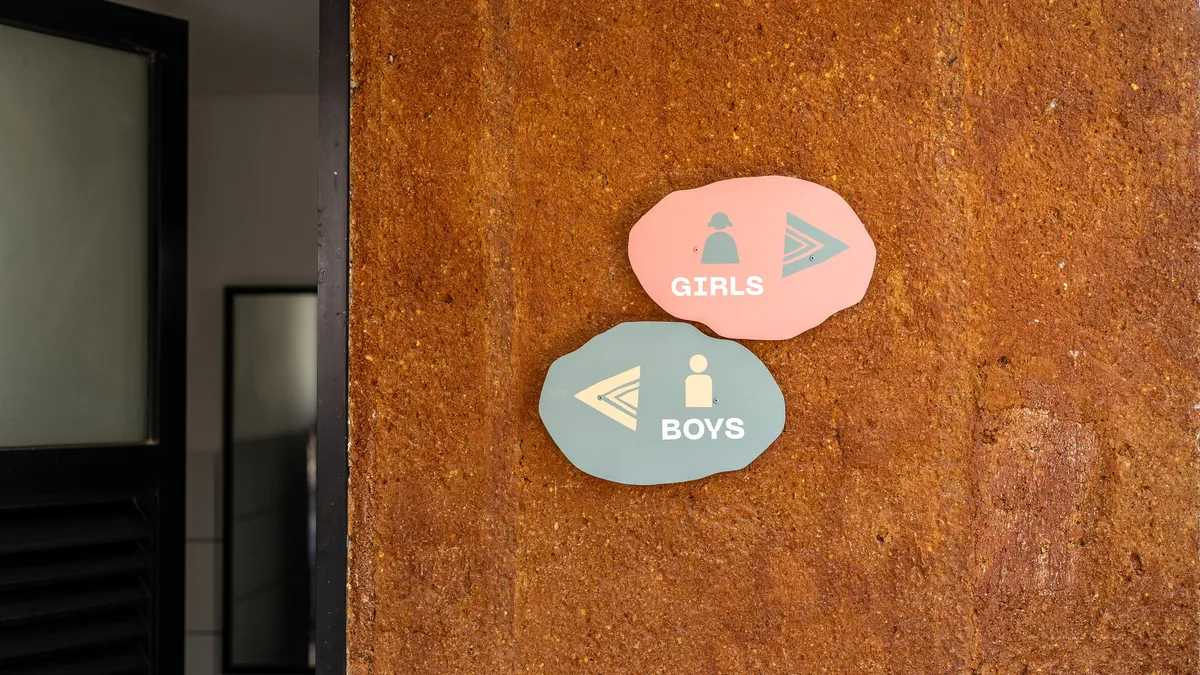


 Dive Awards
Dive Awards

